-
Posts
110 -
Joined
-
Last visited
Content Type
Profiles
Forums
Gallery
Events
Posts posted by LucienL
-
-
3 hours ago, Robp1025 said:
For mounting the bowsprit it's not atleast when I was building I didn't see any but maybe I was suppose to leave something?? I'm not sure but either way.
The instructions on this one lack a bit of foresight. It would be easier to have cut the planking to leave a hole, which could then be widened to allow the bowsprit to fit in. There is a hole in the false keel where it is supposed to go. They don't really tell you that though. Good luck! The bowsprit on the Beagle is quite impressive and will add a lot
- Keith Black and Robp1025
-
 2
2
-
9 hours ago, Ian_Grant said:
Plastic deadeye usefulness depends on their molding method. If they don't have the groove round the perimeter it is very very difficult to seize the shrouds onto them; just ask any Heller Victory builder 🙄. But it looks like your lower deadeyes did have the groove for the strop.
Are you blocks a step above the Revell blocks with their molded loop for a strop?
If you're happy with the colour of the plastic parts, just coat them with "matt varnish" Humbrol or such.
Ship looks great BTW
The blocks are fine, they are essentially just like wooden blocks in shape but happen to be plastic. My main concern with them is more the material, I'm worried that it will just cheapen the whole model as they are very obviously plastic.
7 hours ago, Dziadeczek said:If your deadeyes look similar to those I had to deal with (building my Norske Love from Billings), throw them away and replace them with wooden ones. Check the link here:
If however you bent them properly (wire around each deadeye and into a chain plate), they should be strong enough and you can use them. (I cannot see yours close enough on your photo).
Thomas
I think the deadeyes are fine, they work similar to the way you are describing.
After sleeping on it, I've come to the conclusion that it would always bug me if I did not replace them. It will only get more difficult to make this change as more blocks are added. Thank you for the comments. Looks like it's back to wire bending for me...
-
Hey there, I'm just wondering what everyone's thoughts on plastic blocks and deadeyes are? I'm currently building the Beagle by OcCre and am debating replacing the plastic blocks and deadeyes with wooden ones. This might be a little pricy and would mean undoing a lot of work as I've already added all the plastic deadeyes to the channels. Is it worth replacing them or should I just live with it? Is there anything that can be done to improve plastic deadeyes? They are quite glossy, could I coat them in some matte coating?
- mtaylor, thibaultron and Keith Black
-
 3
3
-
So now the deadeyes, OcCre has made the chainwales on this one very easy. The pieces come with the holes already laser cut, so all you need to do is glue on a strip next to the laser cut part and widen the holes.
I wanted to blacken the brass wire that goes around the deadeyes. I used my homemade blackening solution from my Bounty’s Launch build and left the brass pieces in for way too long. I think the solution has lost some of its strength, maybe as the ammonia has evaporated, so I might need to make up a new batch for when I blacken the chain. Anyway, the brass went all brittle and was practically unusable. Instead, I went to buy replacement wire, but couldn’t find brass in the same size so just used copper. The copper is a lot softer than the brass but worked well enough. They couldn’t be blackened as they had a protective coating, so I painted them instead.
The round nosed pliers came in really handy for bending the wire.
The deadeyes are a little out of scale, I think. From AOTS, they look a bit smaller, and I did measure them to confirm this. There are two reasons why I chose not to replace them. First, by the time I discovered this issue, I was so sick of re-doing things, especially with regards to the deadeyes. Second, there are two sizes of deadeyes in the kit, one for the mizzen shrouds and futtock shrouds and another for the main and foremast shrouds. It thought that if I were to keep up this ratio, the futtock and mizzen deadeyes would be too small. Anyway, I think it looks all right.
Then I started to nail on the deadeye straps, which are a really nicely cut piece in the kit. This was very fiddly at first, but I got into a rhythm.
There is an issue with the kit instructions regarding the chainwales as many who are building this kit have realised. The 5-deadeye chainwale for the mainmast is the wrong way around in the instructions, it should be flipped upside down compared to the instructions like this. I’m not sure how this mistake got through. I suspect, it’s because the kit is slightly different to the prototype on the box, which is different to AOTS. I think the parts were made according to AOTS, but when they made the instructions, they tried to copy the prototype, which has 2 straps next to the stairs, then a gap for the gunport and then the 3 straps.
Anyway, I was pretty happy with this, until I read a comment by @Keith Black describing how the straps should angle with the shrouds as they move further away from the mast. This makes sense now, I kind of ignored the angling shown in the picture in AOTS, as I didn’t really know why they had done it as it looked very random as they attempted to angle around the gunports. Once I started to angle them myself, I realised that they could all be made to angle properly without having to keep the ones close to the gunports straight.
First, I had to remove most of the nails and do some filling and painting to hide the mistakes. To get the angling right, I used a dowel for the masts and marked the height of the shrouds from the plans. Then I tied some thread at this height and inserted the dowel into the mast step. Then the thread could be used to mark the angle for the straps. So, this is what it looks like now…
I guess now we wait until the shrouds go on to know whether the angling is actually right
And with that, the hull was complete. This log is now up to date and any posts from now are happening in real time. I'm having some fun (and some frustration) with the deck furniture at the moment. Still putting off those hammocks...
- Cathead, Keith Black, Fernando E and 3 others
-
 6
6
-
Okay, so here is where the varnish started to go a bit wrong. The thing that really got me to make the change was the appearance of blue-green spots in the varnish seen here.
The varnish had been gradually turning darker and greener over time and I think it is because to wood varnish did not properly seal the copper. As a result, the copper was able to oxidise and cause colour spots in the varnish. I suppose anyone could have told me that sealing copper with wood varnish was a bad idea, but some mistakes we just end up making anyway.
The second major thing was the flaking and bubbling of the varnish. I used a pretty thick coat and because the varnish did not stick to the copper very well, it was easy to form bubbles. These bubbles could break off and leave dips in the finish.
From attempt 1 at the rudder, note the damaged spot just above the middle gudgeon and below the top gudgeon. I tried to cover these in more varnish, but that often made things worse and led to more bubbles.
These factors led me to conclude that the only solution was to strip the varnish from the copper and seal it with a proper copper sealant. I don't know if this exact product is available overseas, but I'm sure there'd be something similar. I really wish I had found this earlier.
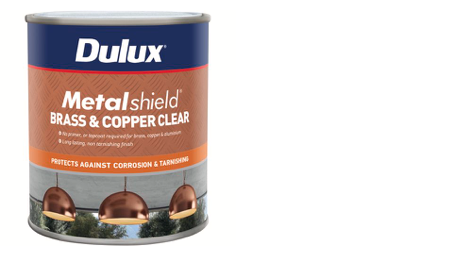
The stripping process was quite traumatic, and I was very reluctant to take photos. First, some of the patina was lost in the removal of the varnish, which meant some plates had to be replaced. Second, the varnish stripper was quite runny and caused some serious damage to the paint (it’s a paint and varnish stripper). The border between the white paint and the black wale had to be almost totally re-done.
The copper sealant was very glossy, but quick drying, meaning that many coats could be added quickly. I could tell that this was a much better adherent to the copper, and it was very difficult to cause the same flaking seen in the wood varnish. To remove the glossiness, I wiped a very light coat of the matte varnish over the copper. To do this, I just dipped a tissue in the varnish and gently wiped it over, avoiding thick build-ups or streaks. Here is the end result
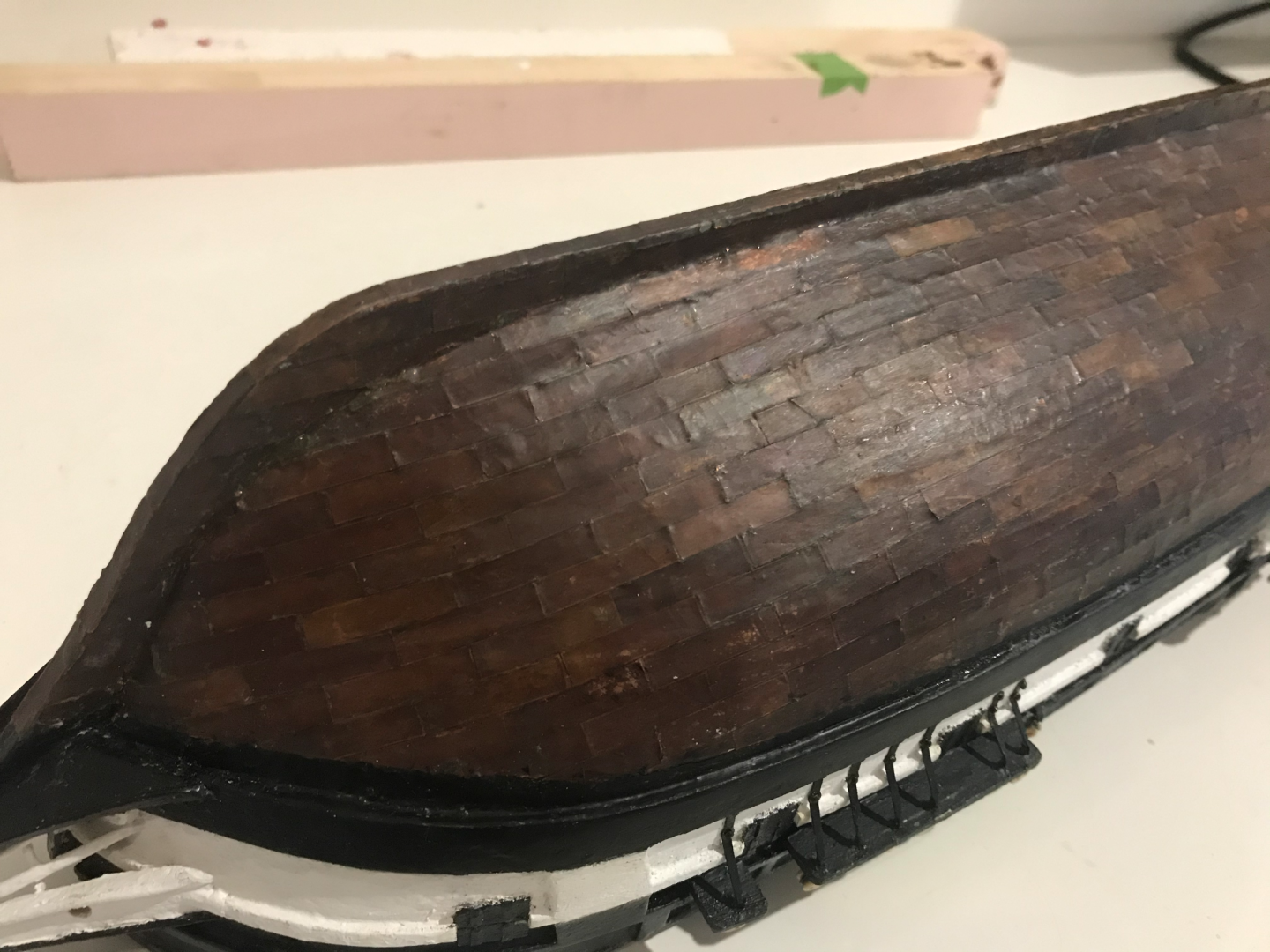
While there are a few bumps, this is more a result of the copper laying not being perfect and sanding it smooth would involve losing patina. Anyway, I'm pretty happy with this and have learnt a lot for coppering hulls in the future. One technique that I think might be easier that I haven't tried, would be to press the plate lines into a long strip of copper tape without cutting through. These strips could then be used to cover the whole hull without using individual plates. This would be much quicker and might give a better effect. I haven't tried it, but might give it a go if and when I ever get to the Victory (got a few boats I'd like to do before that though).
-
6 hours ago, Maliba1025 said:
It truly is a good system I try to use it when ever I can. Especially with dealing with the small details metric measurements work so much better than 1/16 and 1/32 inches
When I only knew a little bit about the imperial system, I knew it was based on 12 for conversions and things, which I could respect, because 12 is objectively a better number than 10 when you want to divide things. But then as I was working on my first kit, the bounty’s launch from model shipways (American), I was exposed to that darker side of the imperial system. Does 1/16th or 3/32 of an inch mean anything to anyone?
-
5 hours ago, Maliba1025 said:
Unfortunately even with me being frugal I still ran out of 1mm brass. Its inevitable so if you dont have any available I would order it now before you get to page J where you will definitely run out.
Also had the same issue with the paint looking clumpy and someone suggested watering down the acrylics so help it be more smooth and clean looking.
I still have 30 cm of 1 mm (3 rods), I just had another look, I will not need that much, maybe my kit just had a bit more, I'm not sure, I can't think of anywhere where I may have saved brass. If I'm missing something, I still have my 0.8... aluminium that I used for the scroll. (it's in some imperial unit🤮).
Might have another go with the paint, thank you.
Also, no offence to people who do use imperial, I am just not a fan
-
Sorry for the break between posts, just been dealing with a hectic couple of weeks and haven’t had much time for boat related things.
It took some fiddling, but I did eventually get the bow details the way I wanted. I added another scroll at the bottom
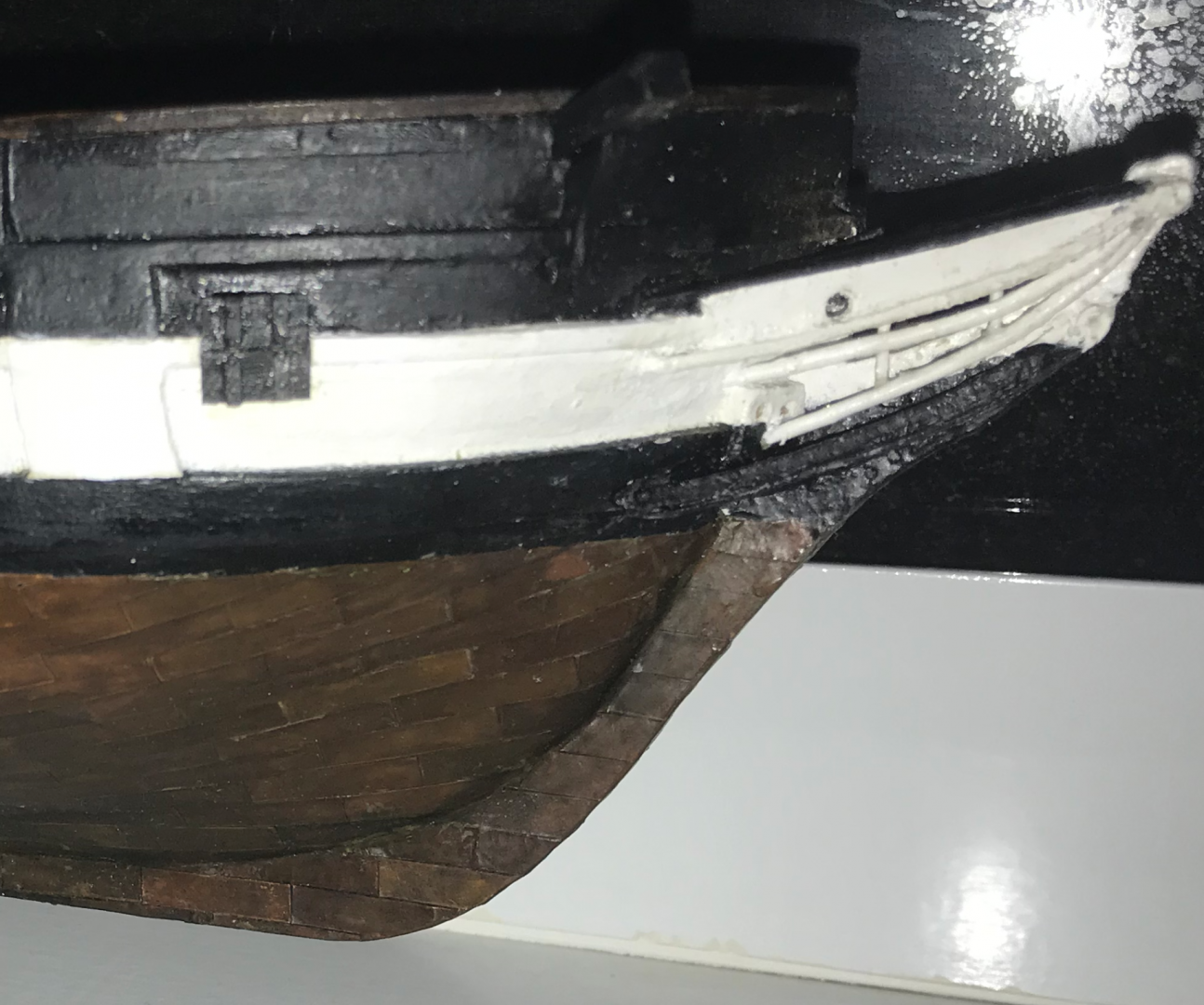
Also, there is a little confusion between the photo instructions, videos and materials list regarding the sizes of the wire you’re supposed to use. The videos indicate that they should all be 1 mm, but the parts list says some of them should be 1.5 mm. I went with the parts list as I figured this would be the best way to avoid running out of material.
I also used some filling putty to connect the rails to the boat and make it look a bit more like one piece. As with all my metal work so far, it started out a little scruffy, but I’ve been working on slowly tidying it with a Dremel and a blade.
-
2 hours ago, Maliba1025 said:
Yea its gonna be an experience cause I need to find somewhere that ships out sheets and idk how I'm gonna cut it. I need to do some research cause like the ladders I only have enough for one ladder. It's all I could save lol I do have some pieces though so it's not all bad.
Hey Maliba, my guess is that it would be easier to make the ladders out of wood than re-do the brass ones. I thought the brass ones looked a little flimsy anyway and am currently working on some wooden ones. It's a bit fiddly but would be easier than having to cut some brass, wood is a bit more forgiving with the glue and cutting.
-
20 hours ago, Keith S said:
OK, this is the best thing on the internet today, for several reasons. Being in Canada, I have some of the same frustrations finding items that are common in America, like blackening solution. It's probably more common here, but still not all that common. So, I order mine from "E bay".
After seeing this, whenever I start feeling a bit sorry for myself because my model ship is giving me some difficulty, I will remind myself of the Australian lad who MADE HIS OWN blackening solution.
Also, picking up the project nine years after it was abandoned and finishing it: also a great message for the rest of us in these dissipated times.
I am more than impressed, and I hope this model gets pride of place in your house.
Edit: also, NOT a beginner's kit, in my book. Extra points for the planking job and soldering your own gudgeons and pintles.
Hi Keith, thank you for your very kind comments, it means a lot
-
Also, AOTS has ropes tying off to anchor points at the base of the foremast. These are not present in the kit, so the lack of these could be contributing to how crowded the pin rack behind the windlass appears to be. If there’s space you could add some eyebolts around the fore mast (similar to the main mast) to tie off some of the ropes.
- Robp1025 and Keith Black
-
 2
2
-
Okay, looking at the instructions again, 6 tie off to belaying pins (J33, J33, J34, J35, J36 and J102), with 8 that tie off somewhere on the posts (J41, J41, J50, J54, J81, J81) I'm not sure where exactly the 2 J73s tie off to, may need to check the videos, but it could be the posts as well.
- Robp1025 and Keith Black
-
 2
2
-
18 minutes ago, Maliba1025 said:
I think 6 should be enough, some of them may tie off to the post. AOTS may have additional rigging not included in the instructions (I'm not really sure at the moment though), but if you do the rigging as per the instructions, 6 should be enough.
- Keith Black and Robp1025
-
 2
2
-
19 minutes ago, Maliba1025 said:
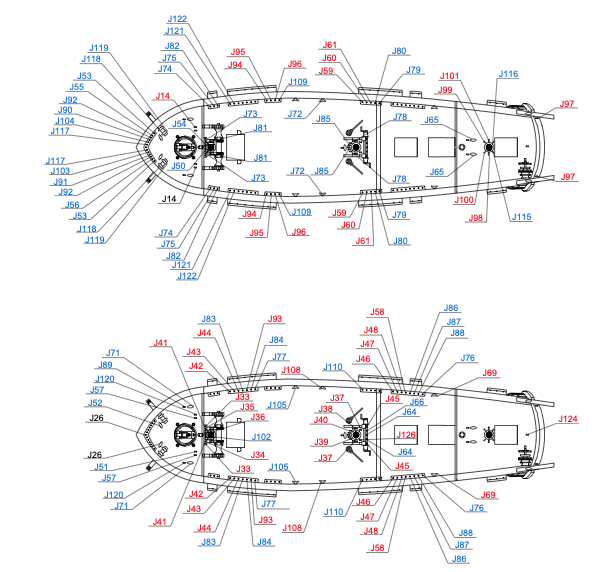

In both anatomy of the ship and the OcCre instructions, rigging needs to be tied off there, so you need something to do that with. It could have been pin racks and they just haven't included it in the diagram. Have a look at figure I4/1 in anatomy of the ship, something has to go behind the windlass that is definitely not shown in the anatomy of the ship diagram. It might be hidden by the mast in this diagram, I think that the pin rack should go in the middle of the two posts running behind the mast.
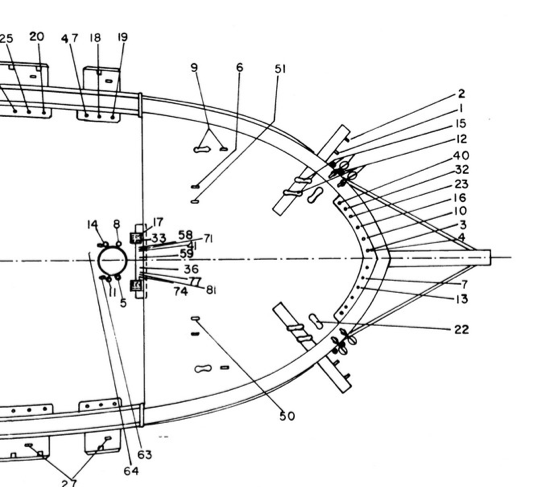
The rigging page of the instructions has it right, I think the photo instructions are probably wrong, there should be two pins on the sides of the posts and two between, that should give you the correct dimensions
- Cathead and Keith Black
-
 2
2
-
Hello everyone, and welcome to another episode of me slowly losing my sanity, today we will be talking about the rudder.
I ground down the pintles and gudgeons provided to make the scale a little better and also drilled a few extra holes.
Then after a very long night I was able to assemble the rudder hinges and attach them to the boat. This is where things go wrong…
First and most obviously, this should not have been after the copper had been varnished. Drilling into the hull caused some of the varnish to flake as it did not cling to the copper properly. Second, while the hinges here do run parallel pretty well, they are not perpendicular to the sternpost as they should be. After some more painful back and forth, I decided that this was unacceptable and re-did it…another long night
While this did correct the angling issue (mostly), the varnish flaking got worse (foreshadowing).
Anyway, then I decided to ignore this little area of the boat and work on the bow.
-
14 hours ago, AJohnson said:
Really like the copper plates you have done, the kit provided ones for other builds I've done are all a bit too nice and shiny for my liking and you have gone to the trouble to darken yours, wish I had! So good to see someone making their own - well done! 👏
Thanks AJohnson, it definitely adds a lot of time to the build, the experimentation was quite time consuming, but I feel it was worth it.
-
2 hours ago, Keith Black said:
Maliba, FYI. Notice In the illustration above, notice how the deadeye straps toward the stern run at an angle like so, / and gradually become straight up and down like so, I the closer the shrouds and straps get to the mast? See illustration below. This allows the pull/load of the shroud lines to be aligned with the straps. It's a very small detail but something you need to be aware of for future builds.
I’m very tempted to re-do mine now. Issue is, with the gun ports it’s impossible to angle them all, meaning that some will still have to be straight, and I’m not sure I like the look of that
-
3 hours ago, Maliba1025 said:
@LucienL I have a question I just downloaded the anatomy of the ship for the Beagle and I was looking through the diagrams and the OcCre instructions aren't the same as the book.
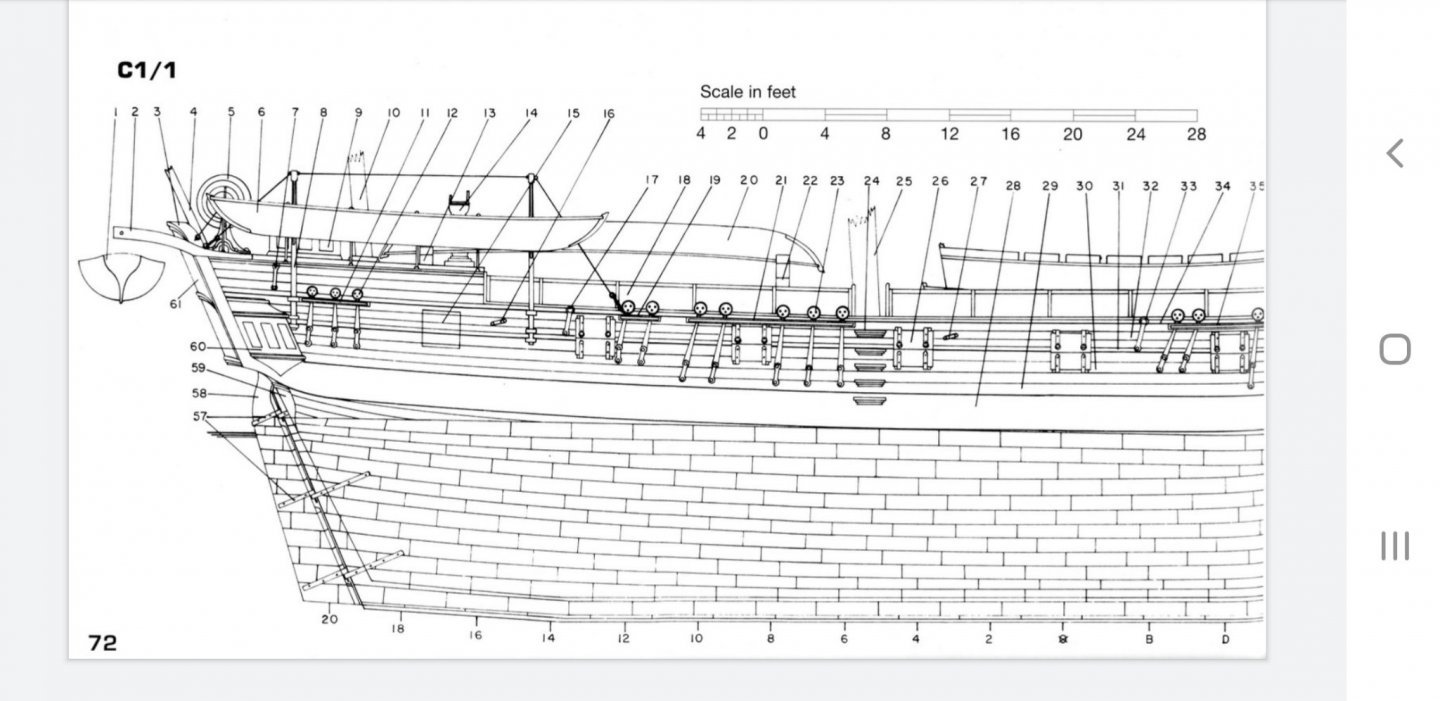
Should I be switching the the 5 slot and the two slot to make it correct? Or is the OcCre correct?
Yeah I think the 5 needs to be closest to the entrance. That’s how I did it in mine. The instructions are a bit weird on this one. The prototype on the picture on the box looks right, but it’s different to the anatomy of the ship. I think the provided channels are the same as anatomy of the ship, but the instructions try and get you to follow how they’ve done it on the prototype which leads to some issues.
-
Thanks Techtonic! It did get a bit worse after this, but I’m still happy with it
-
Nice boats, they are very cute
-
Okay, so now attempt 2 at the coppering. I bought liver of sulfur in the gel form from a jewellery store online. The gel form is better as it doesn’t lose potency quickly like the solid form does. https://koodak.com.au/products/liver-of-sulphur-for-silver-copper-brass?variant=30180608397. There are some very useful tutorials online on how to use the stuff and what to be careful about, I’ll outline the main points.
I added about 3 mL of the gel to a cup of boiling water from a kettle (not rolling or bubbling just steaming). It's good to let the water cool a bit before adding the gel. If you boil the liver of sulfur, you get toxic sulfur dioxide, so be careful. The hotter the water is, the quicker and deeper the patina will develop. I tried colder water, but it ended up more purple than brown. You have to be quick to get the copper done quickly as the water will cool and the strips dipped later will be a different colour to the ones dipped earlier.
Then I stuck the copper in for a couple of seconds, as soon as there was a colour change (again, you need to be quick, a second too long will make it too dark), I took it out and stuck it in a bicarbonate bath. The bicarb bath is meant to halt the reaction, but it might change colour after it dries a bit. I went through a few trials at different temperatures and leaving the copper in for different times to get the colour I wanted.
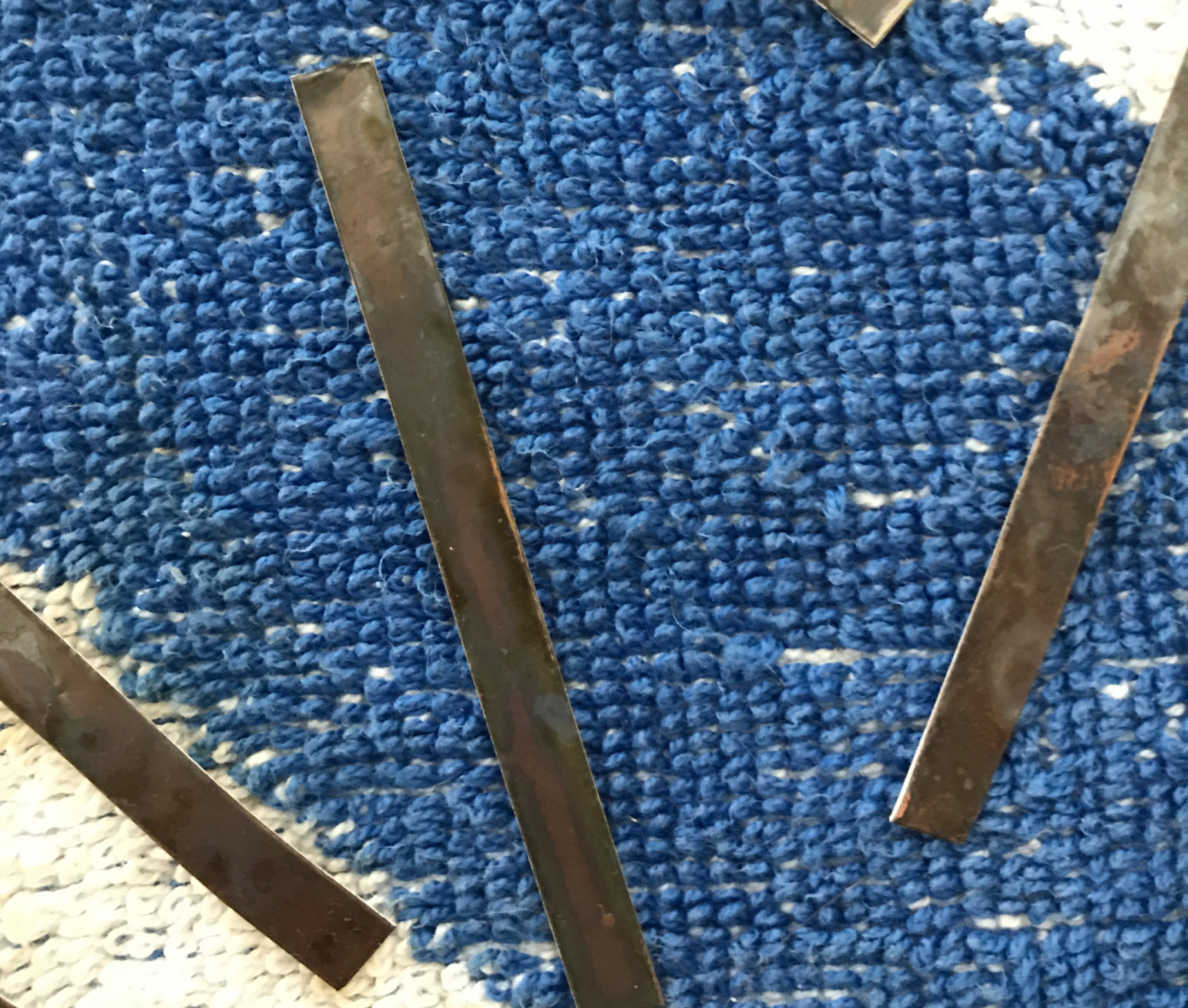
I set up a bit of an assembly line, with the copper strips and then a rectangular container with the liver of sulfur solution. Then I stuck in maybe 3 or 4 strips, by the time the last one was in, the first one was ready to take out. Then I had the bicarb bath and stuck them in straight away. It doesn't matter how long they stay in the bicarb bath; they will still change colour when they are taken out.
After the plates were on the ship, I lightly buffed it with some fine steel wool to make it a bit more orange again (careful to not turn up the corners of the plates). One side was a little too dark and the steel wool made it similar to the other side.
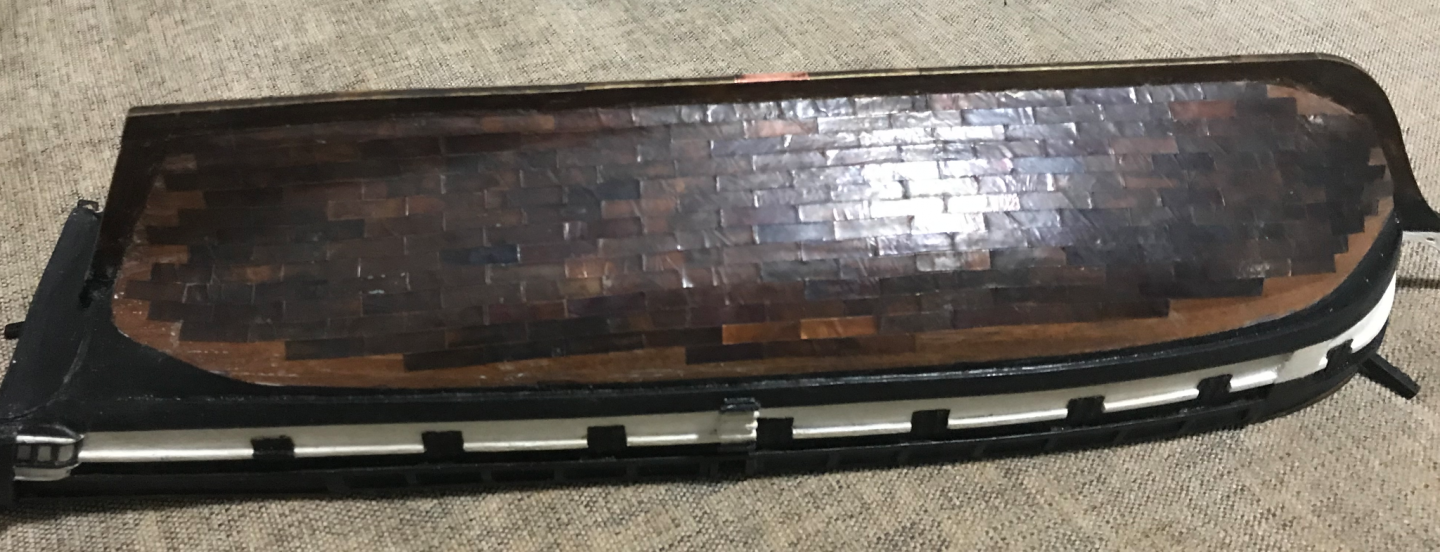
This was my first batch of plates and it did come out a bit too dark and purple, I think I left it in for a little longer than the other side. Anyway, it looked different after some varnish.
Please note, this is a mistake, do not repeat what I have done. The varnish is not a good sealer for the copper (this photo the varnish is still wet). I'll show in a couple of posts, but there were many problems with using wood varnish to seal the copper. The liver of sulfur does not dull the plates and the patina is still shiny, so it does need some kind of dull coating to look accurate at scale.
In terms of actually cutting the plates and placing them, all I can say is; have a sharp blade, be patient and don't be unwilling to take plates off if they are wrong. Anyway, time for photos now...
- Fernando E, Cathead, AJohnson and 4 others
-
 7
7
-
6 hours ago, Keith Black said:
I'd scrape the planks with a razor blade before I'd use a piece of broken glass due to the unevenness of the edge. Maybe glass breaks different down under than it does here in the colonies?

Hahaha, no, I’m sure it breaks the same way. I just found the glass to be more effective if you can get a shard with a decent edge. I did try with a razor blade, but didn’t get the same results. Maybe my blade was too blunt, it does need to be quite sharp to work and smashing some glass gives you lots of cheap little disposable blades.
-
To get rid of the smudging, I’ve found that a good way is to use a shard of glass. Go out and smash a glass jar with a hammer and use one of the shards to scrape your deck. It makes it very clean without destroying the grain of the wood or taking off the caulking.
An eraser could just make the smudging worse, it doesn’t work great on wood. You could also try methylated spirits or acetone.
-
Okay, so now I’ll talk about my first coppering attempt, which did not go that well. First, choosing material; I initially was unsure about using copper tape as I was worried it would be too thin and not sticky enough. I was hoping to just find a thin sheet of copper, which I would then use to cut the plates out of. Eventually I found a wide copper tape from an electronics supply store. I then attempted to patina them with ammonia fumes. To do this, I suspended small pieces of the tape over a container of the liquid ammonia. I put a lid on the container and allowed the fumes to darken the copper. This gave an extremely inconsistent patina ranging from almost black to blue-green.
This may be what some people are looking for, but I wanted a dark brown patina. I am sceptical that the plates would have been installed shiny on the Beagle. This was a time before rapid transport of materials and the plates would have been unlikely to remain clean and un-oxidised on their journey. Someone who knows better may be able to correct me, but this is just my feeling. Also, more importantly, I did not think that the shiny copper plates would have fit aesthetically with the Beagle as a working boat. I feel it better suits a large first rate ship of the line than a somewhat ill-equipped survey ship from an unpopular line of naval ships.
Also, cutting the plates out of this copper tape was very difficult. It was a constant challenge to get them all cut to the same width and evenly. This also resulted in a lot of handling and a loss of patina. Some of the plates were glued on using contact glue as the ageing process caused the paper backing to fall off and the glue to lose its strength.
Once I realised that I was unhappy with this, it was back to the drawing board. I had also tried bicarb soda to age it (which did nothing) and a copper carbonate and ammonia blackening solution (which also did not give the desired effect). I did some more research on patinas and came to the conclusion, that to get the patina I really wanted, I needed to use what the professionals use, which is liver of sulfur. I also bought some 5 mm wide copper tape from an electronics store so I wouldn’t have to cut the plates out of large copper pieces.


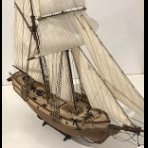
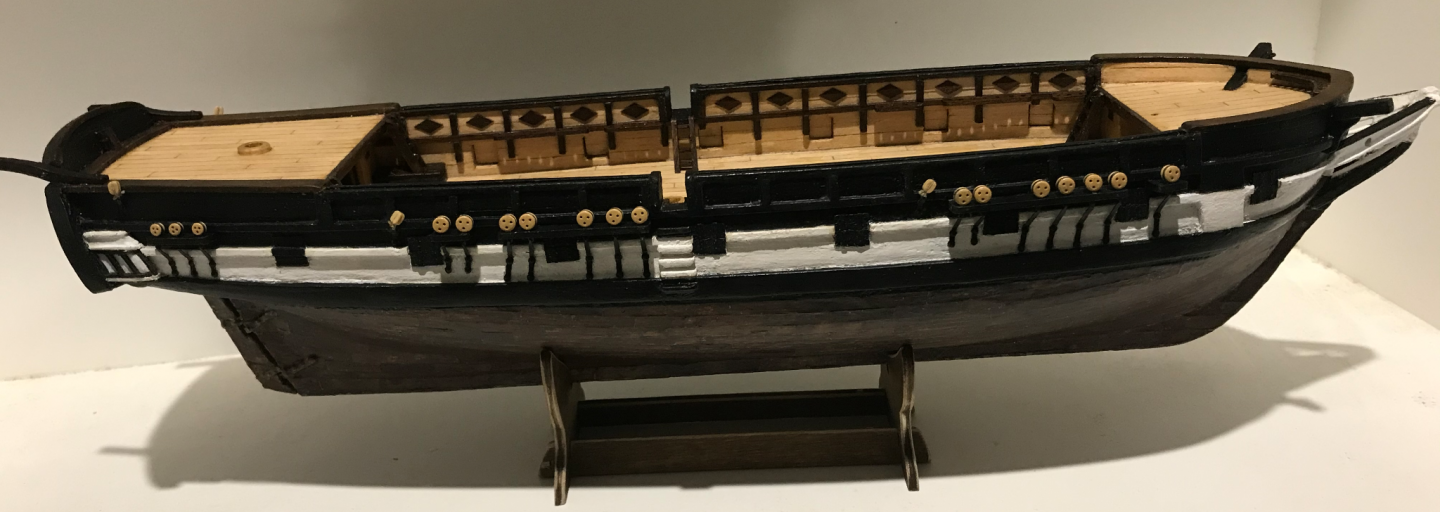
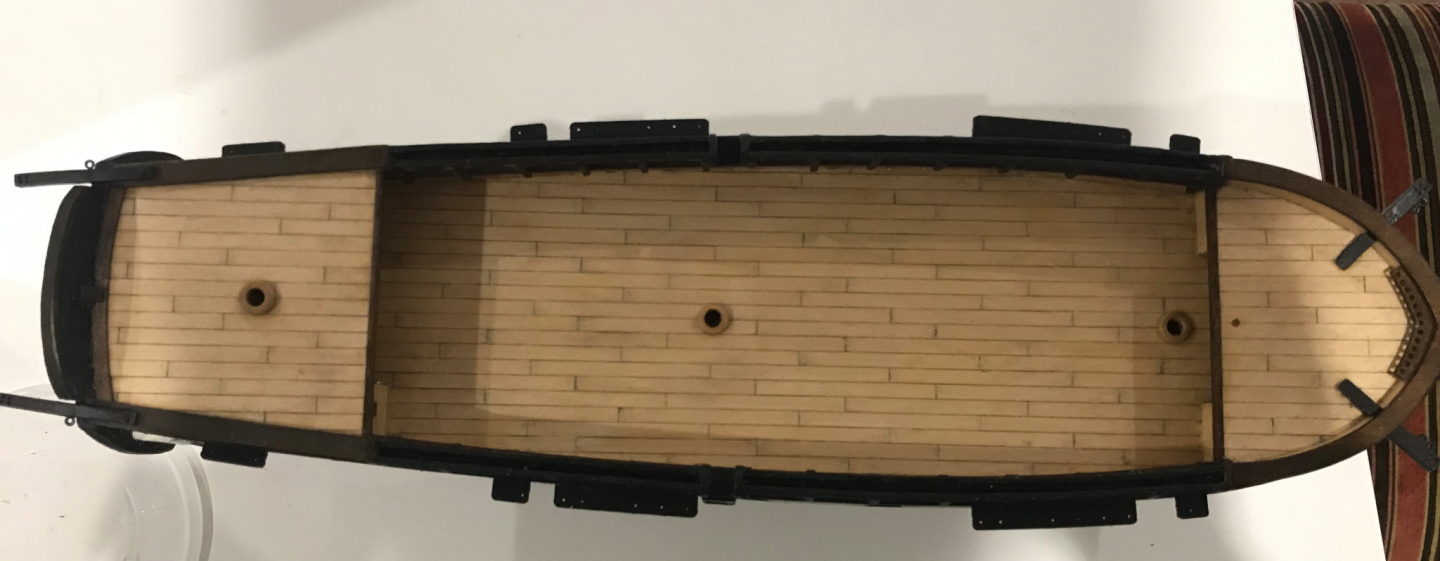

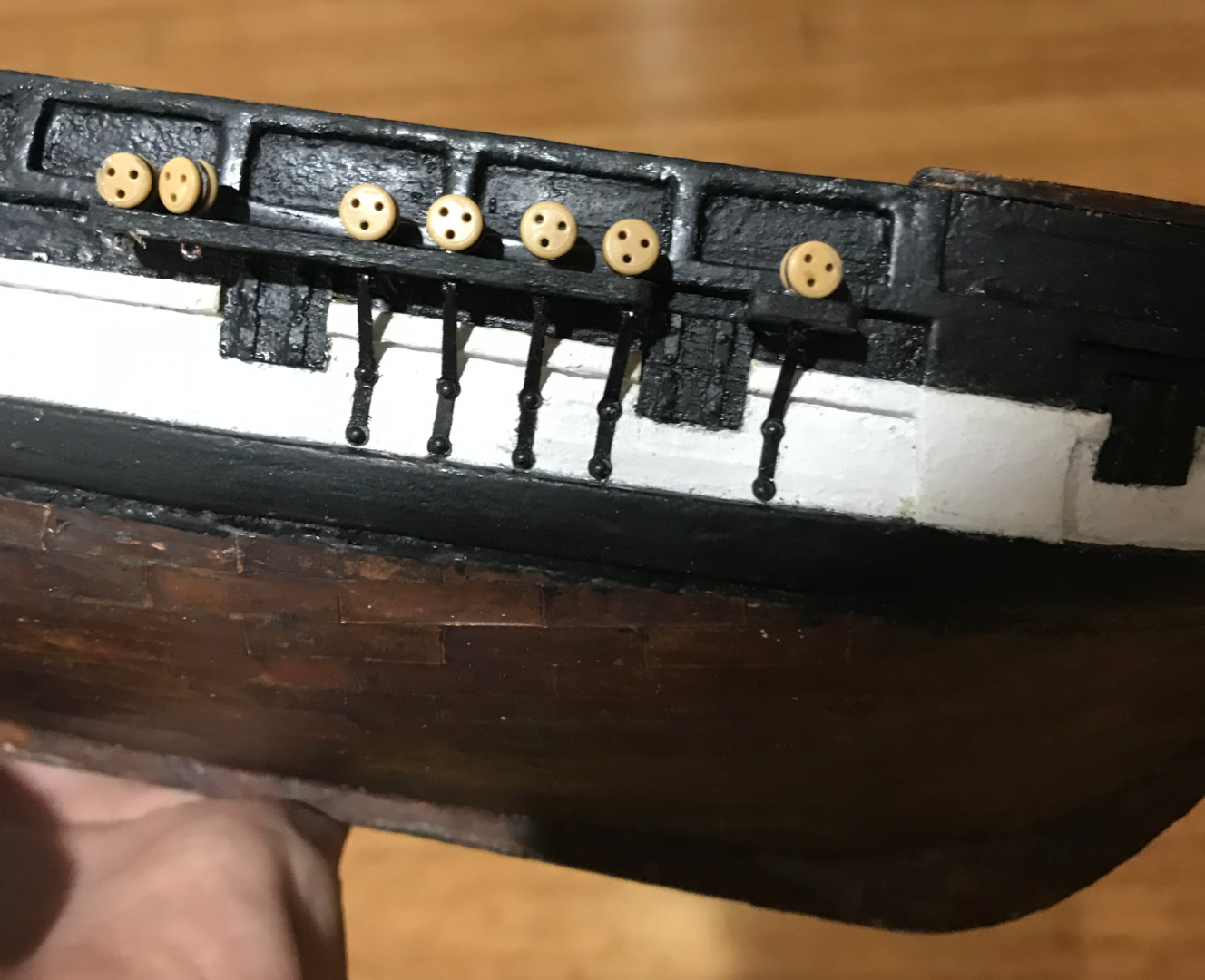

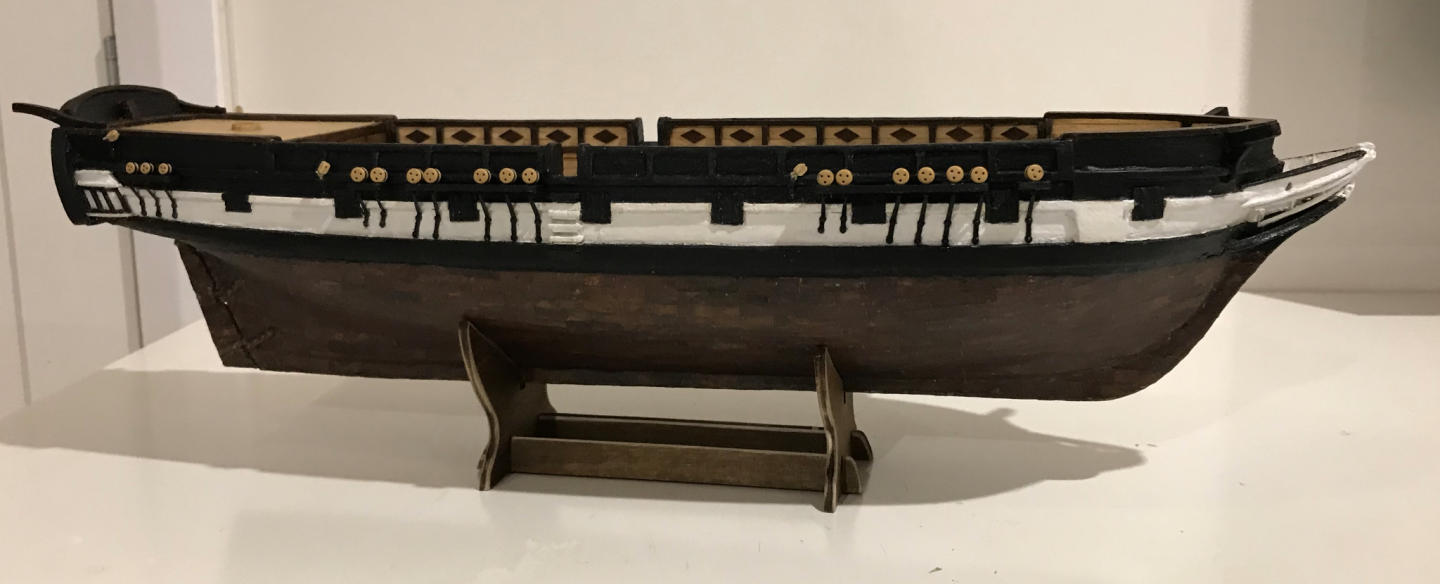
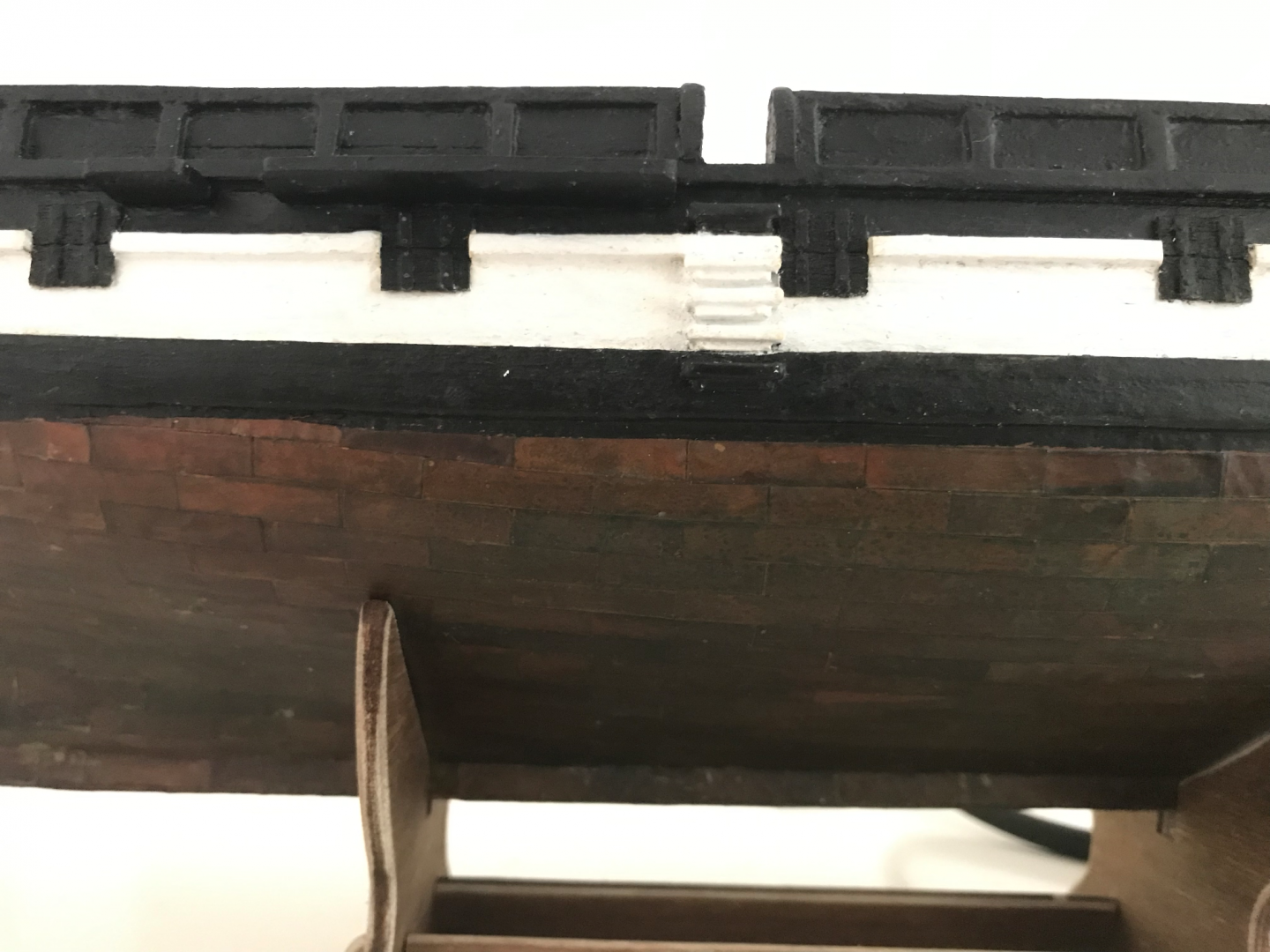
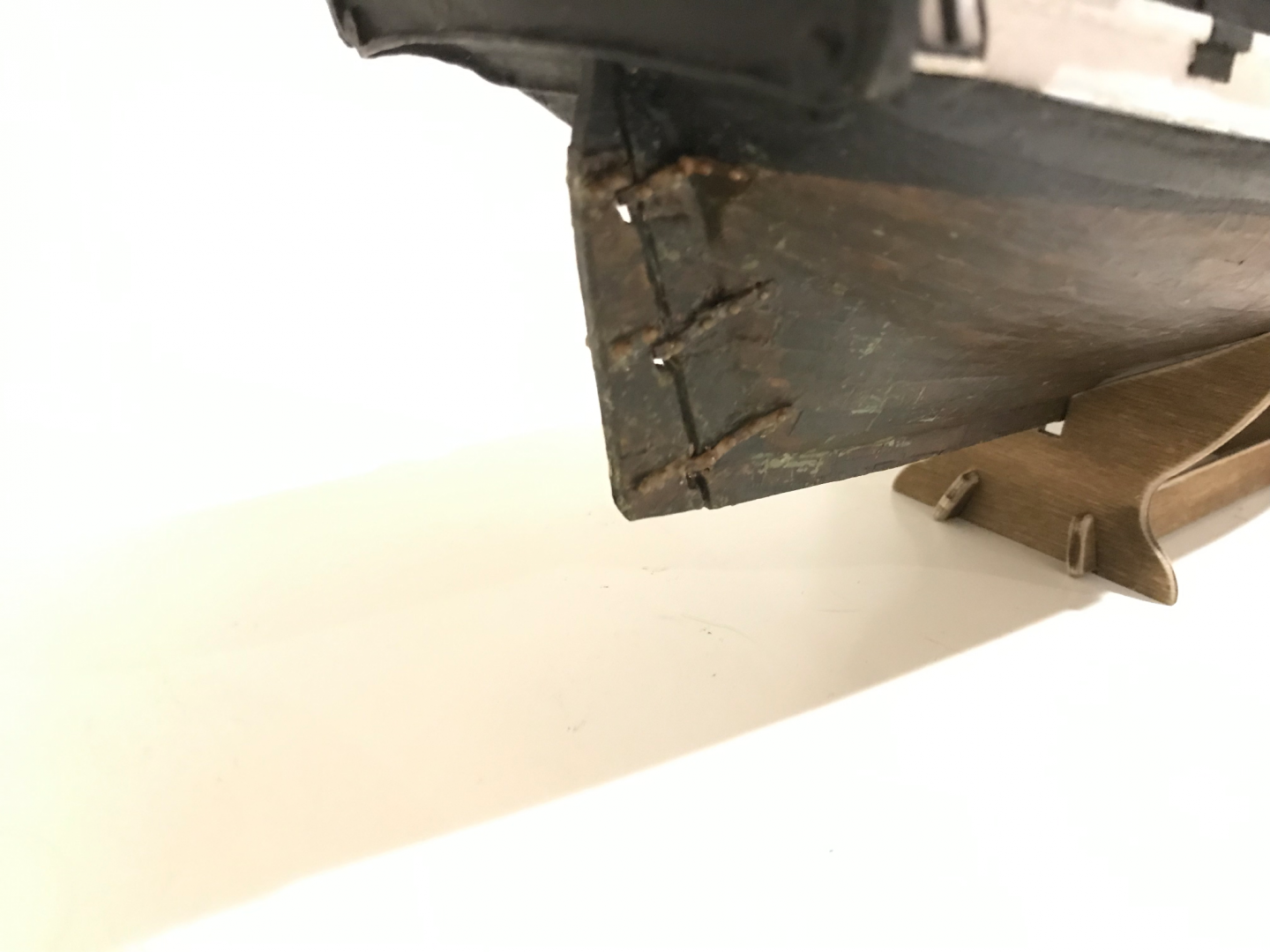
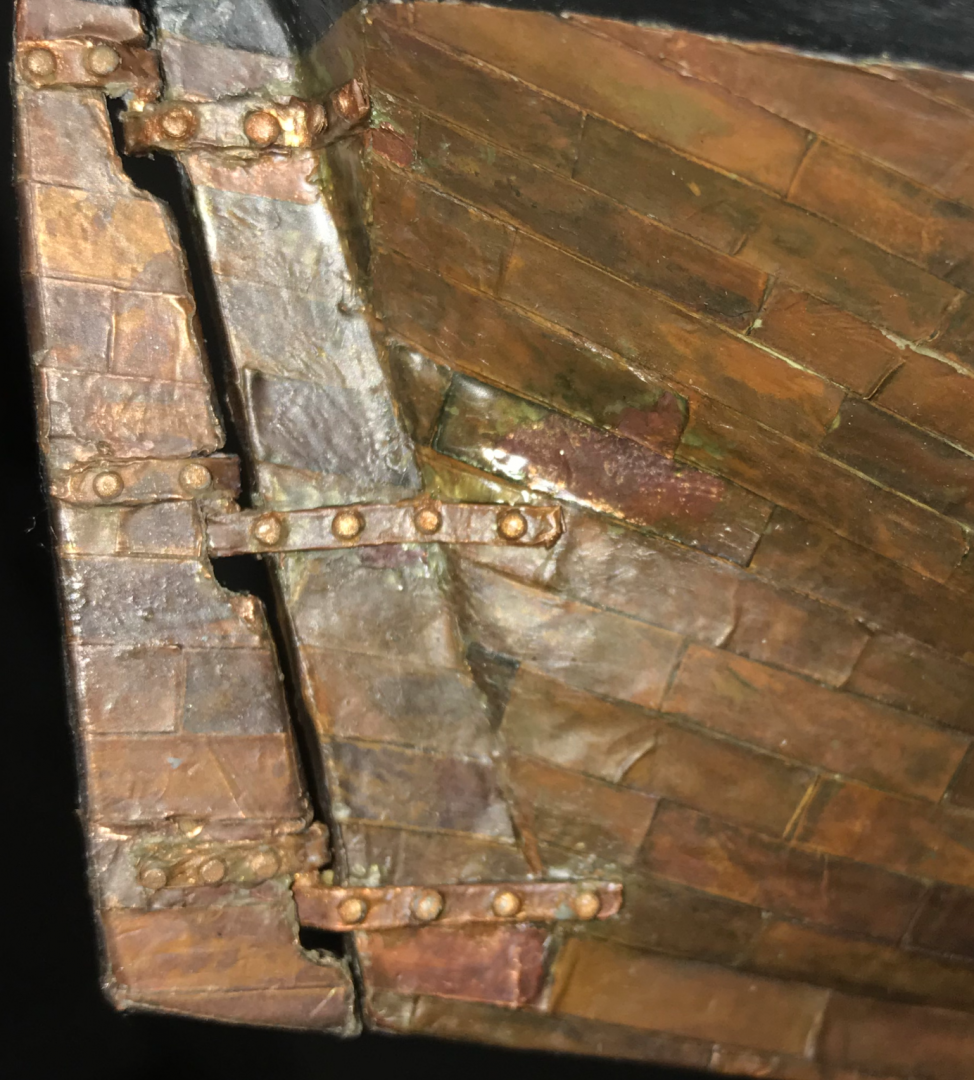
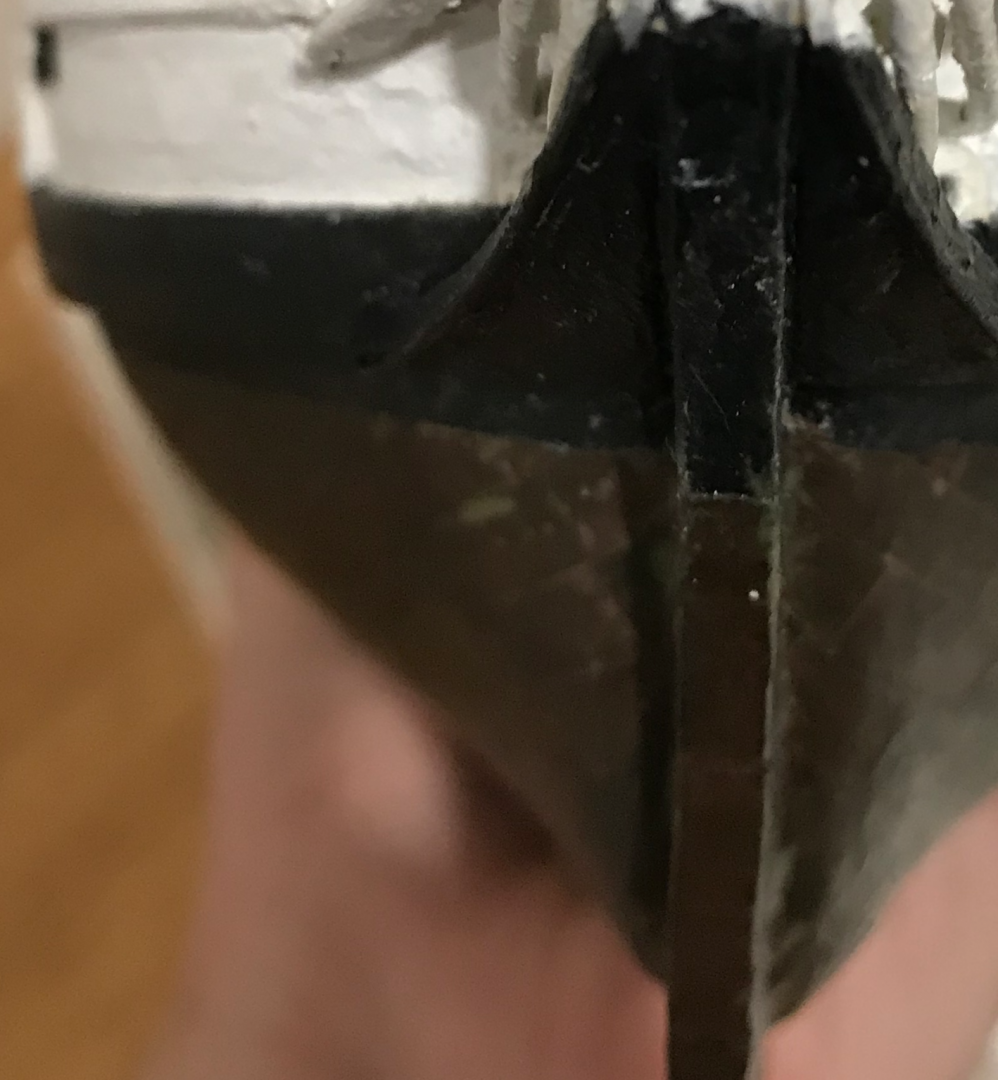
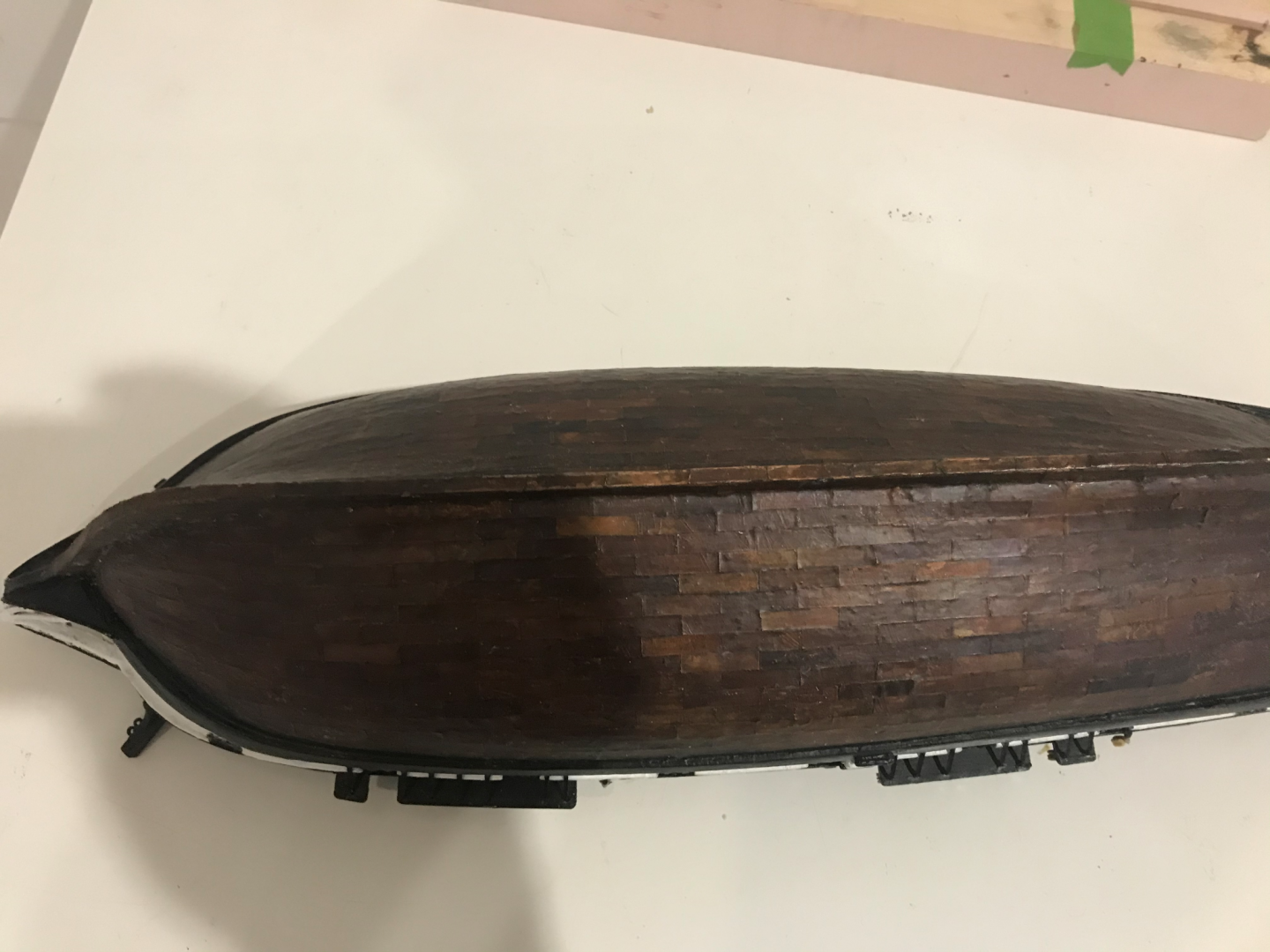
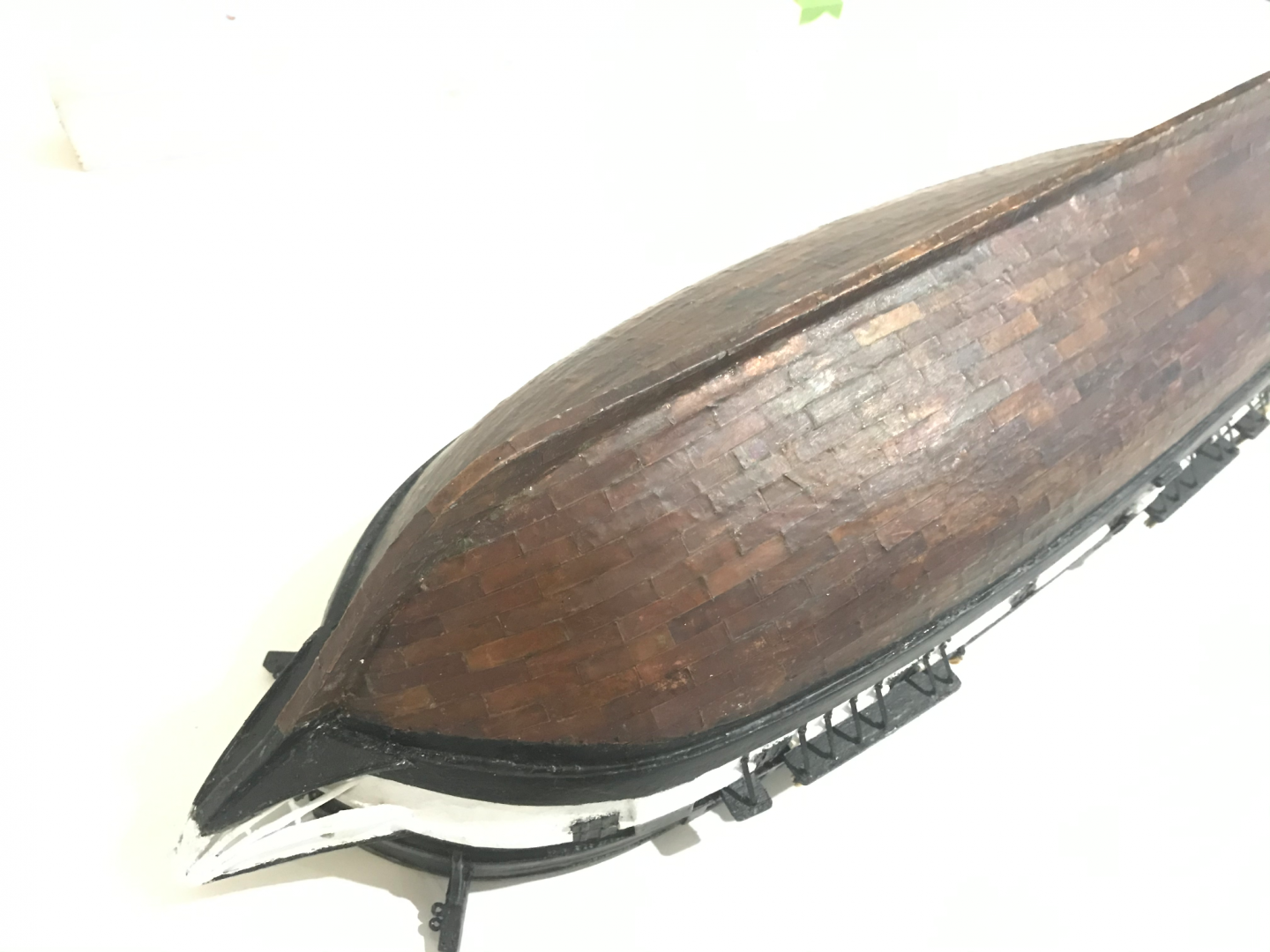

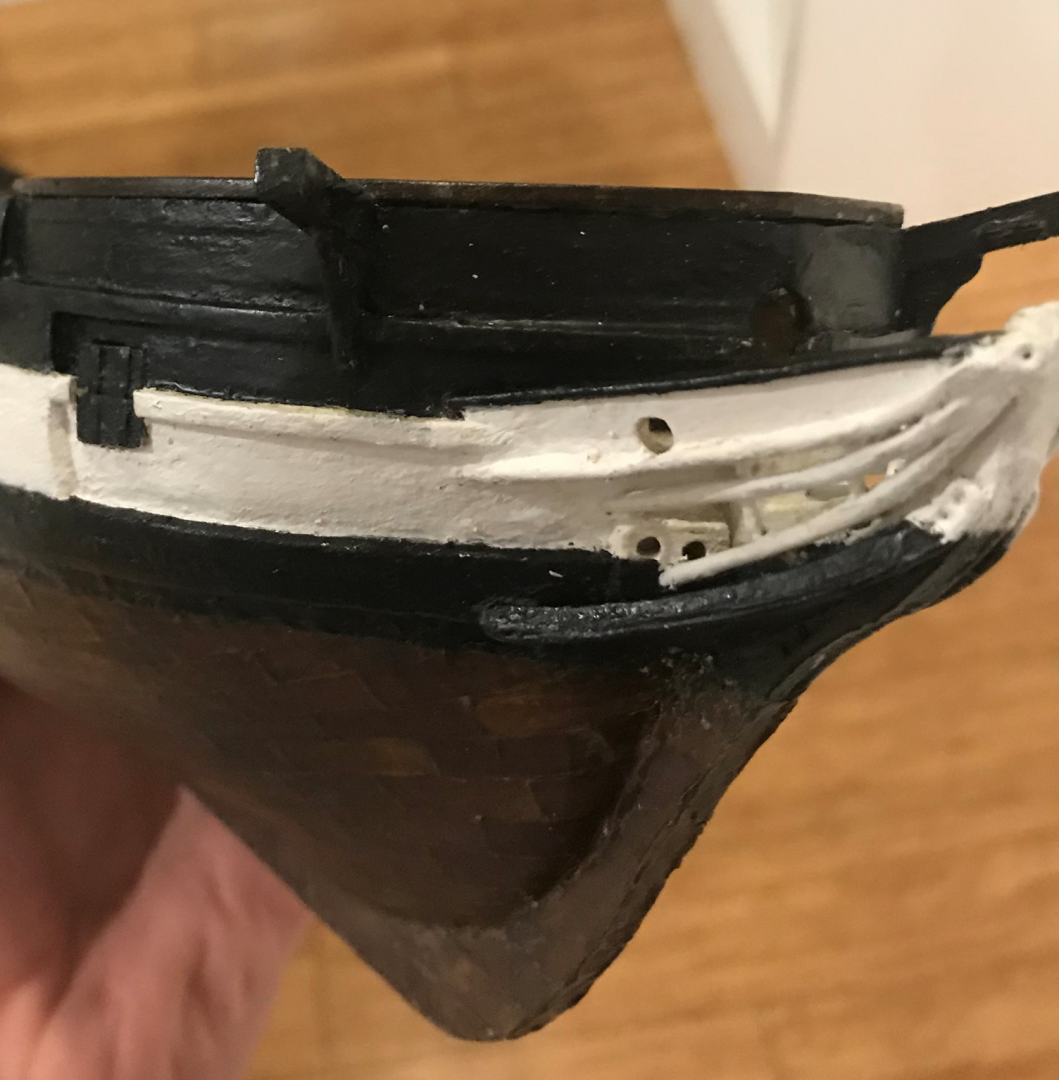
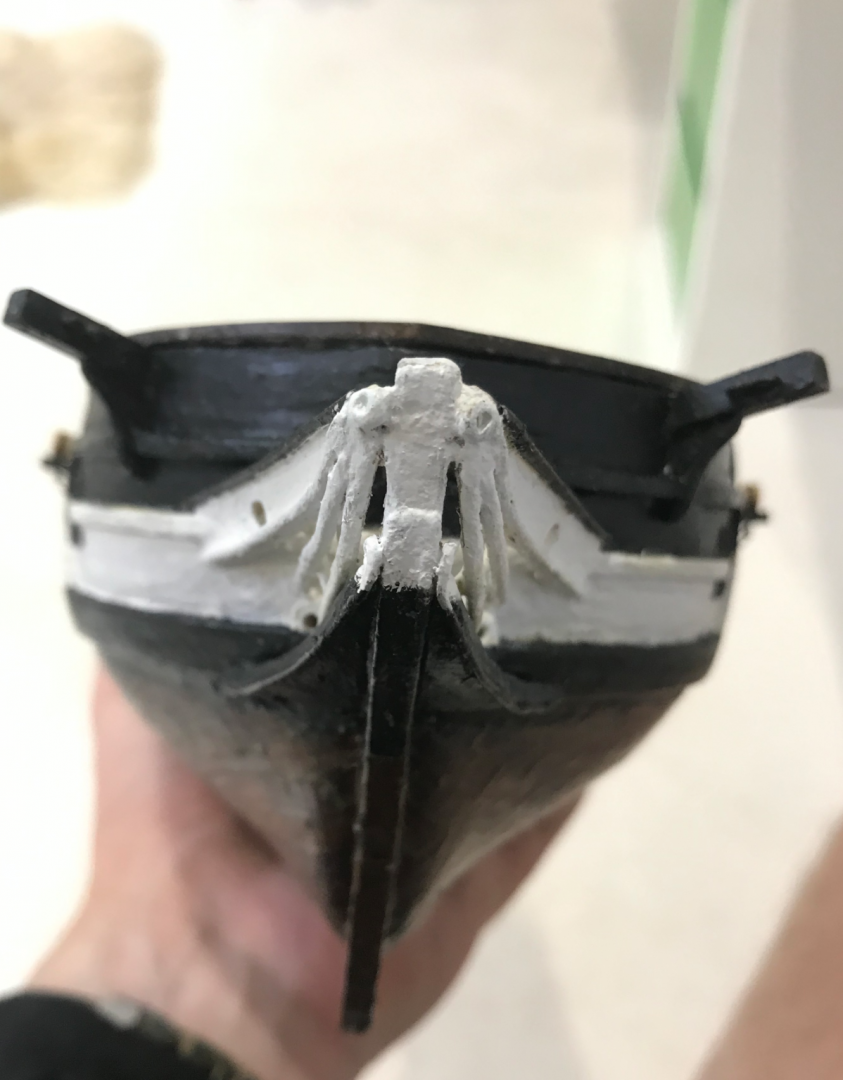
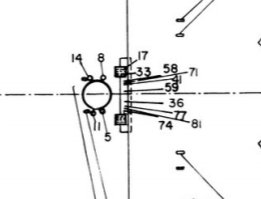
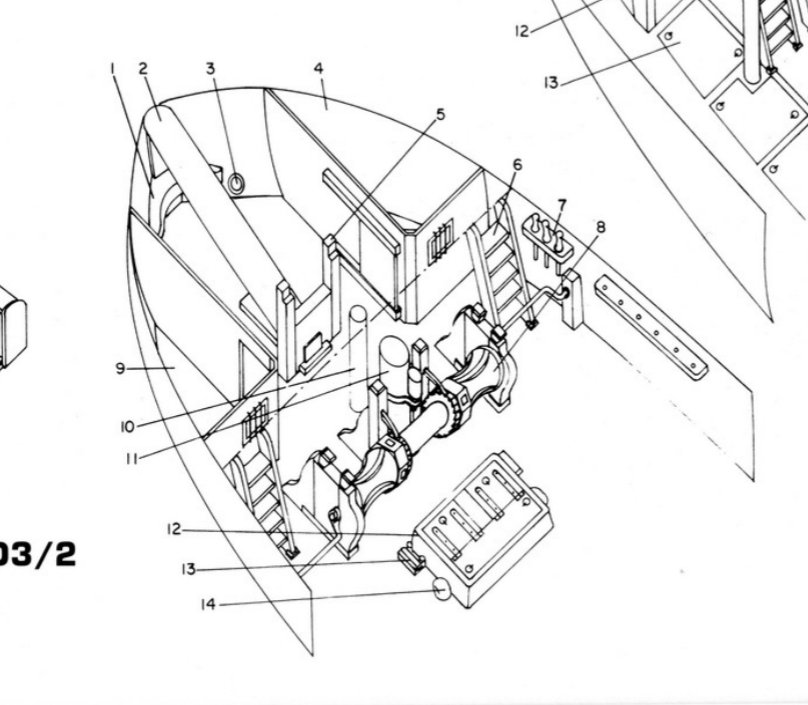
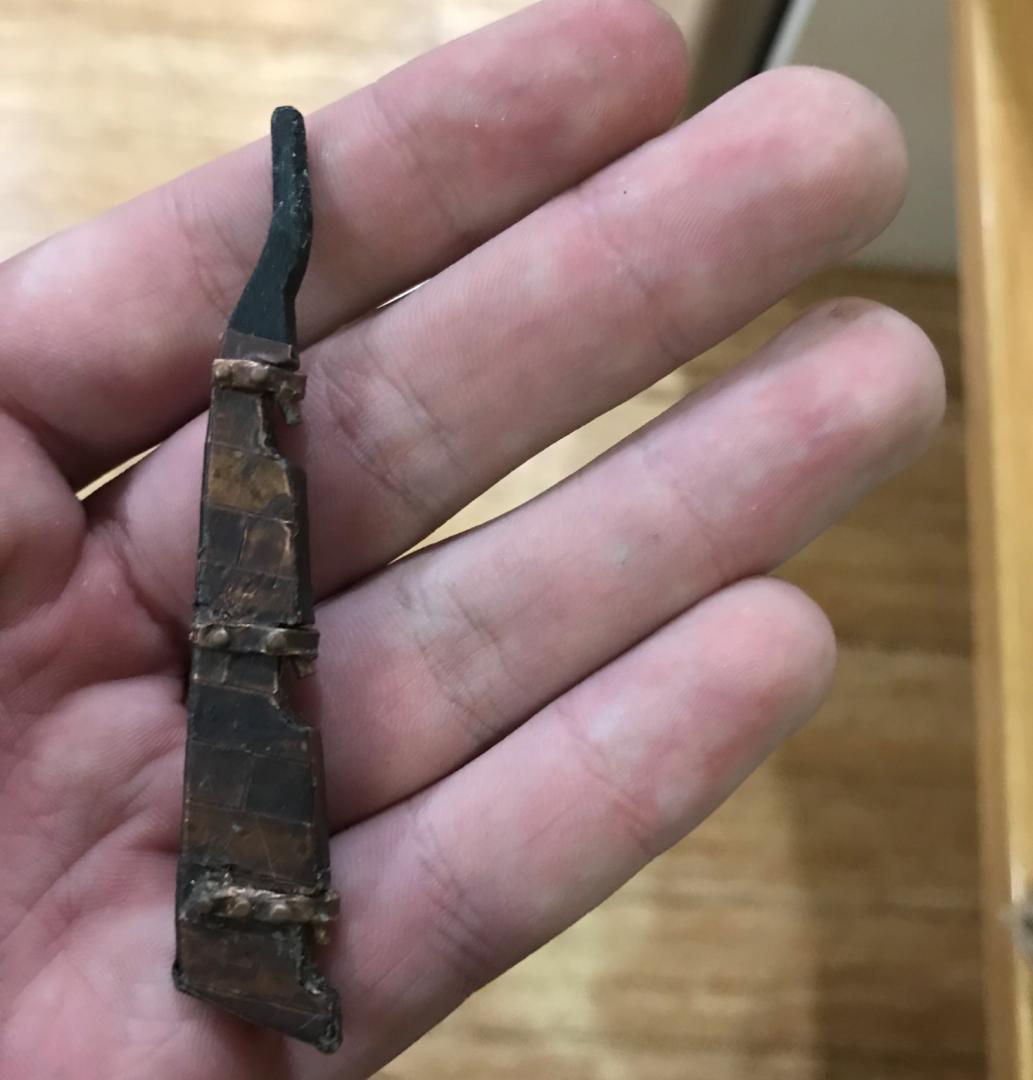
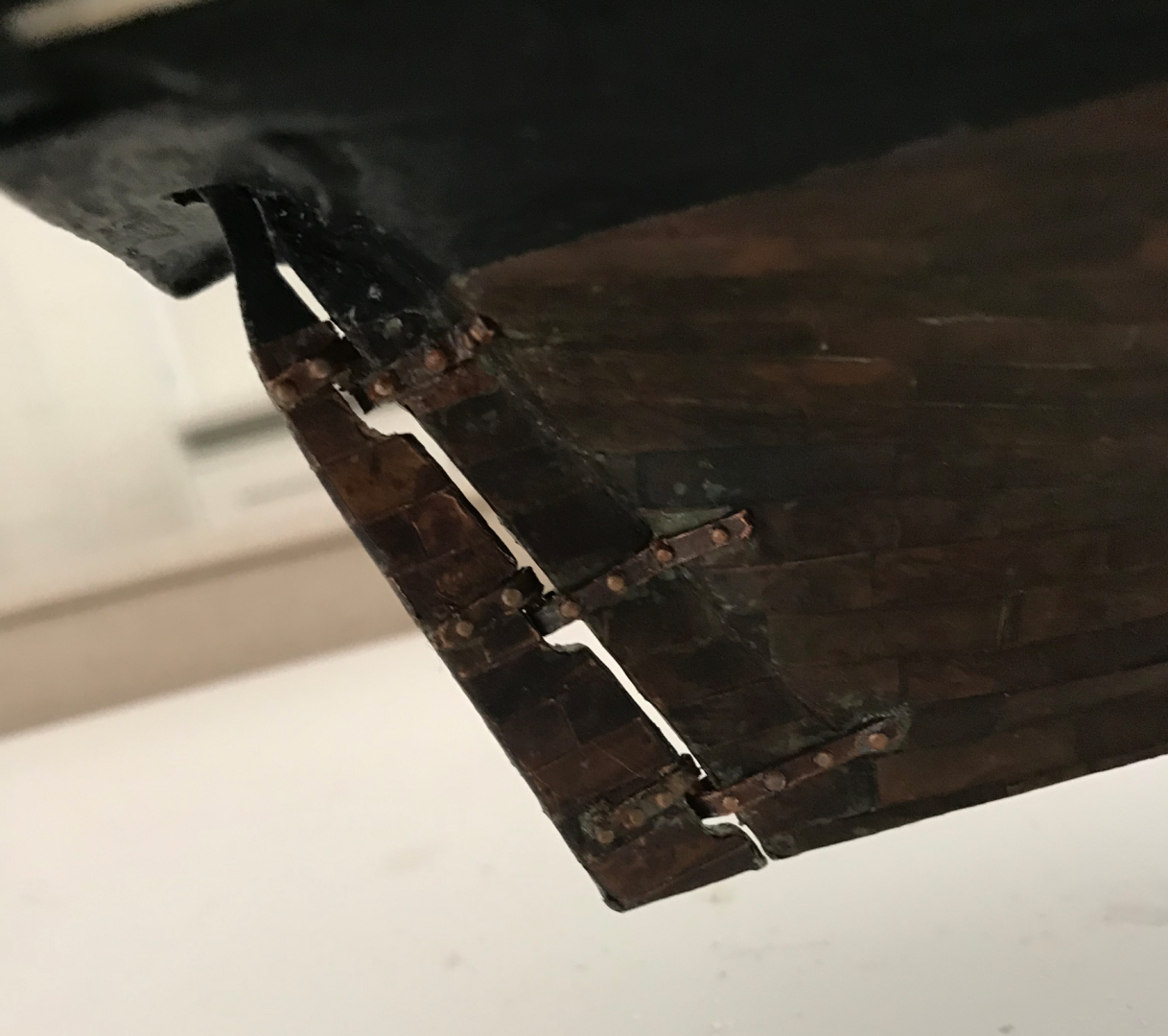
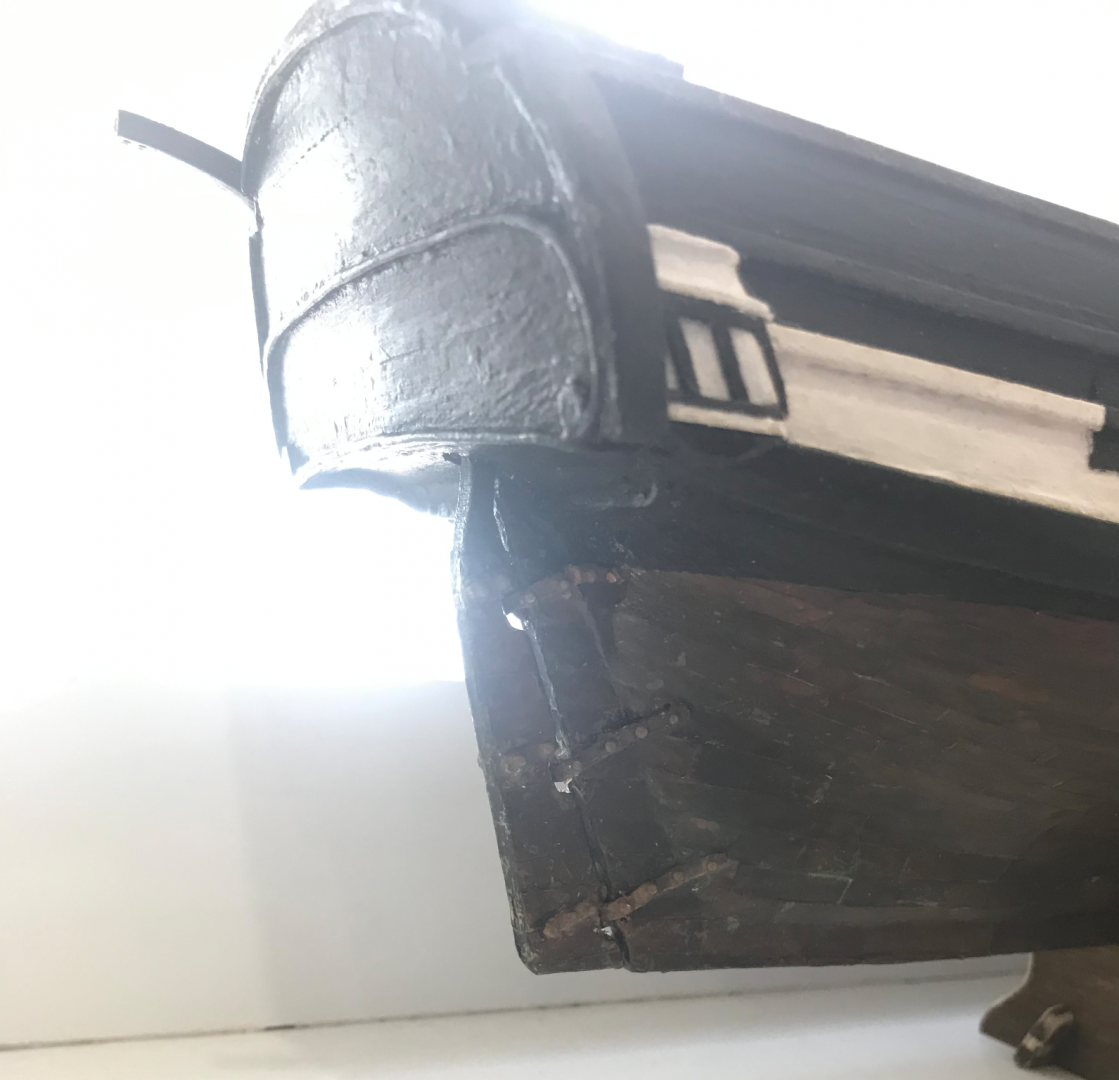

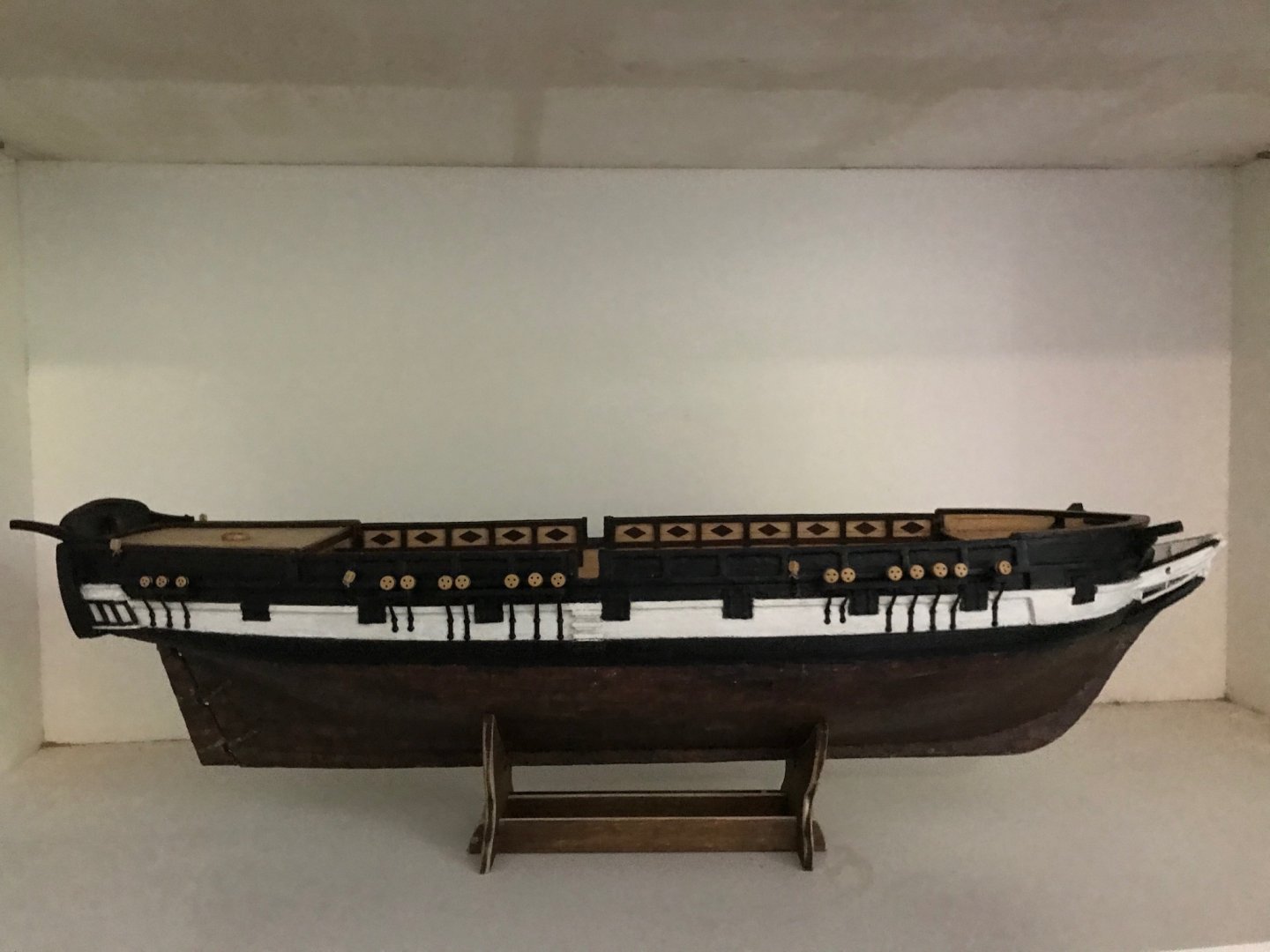
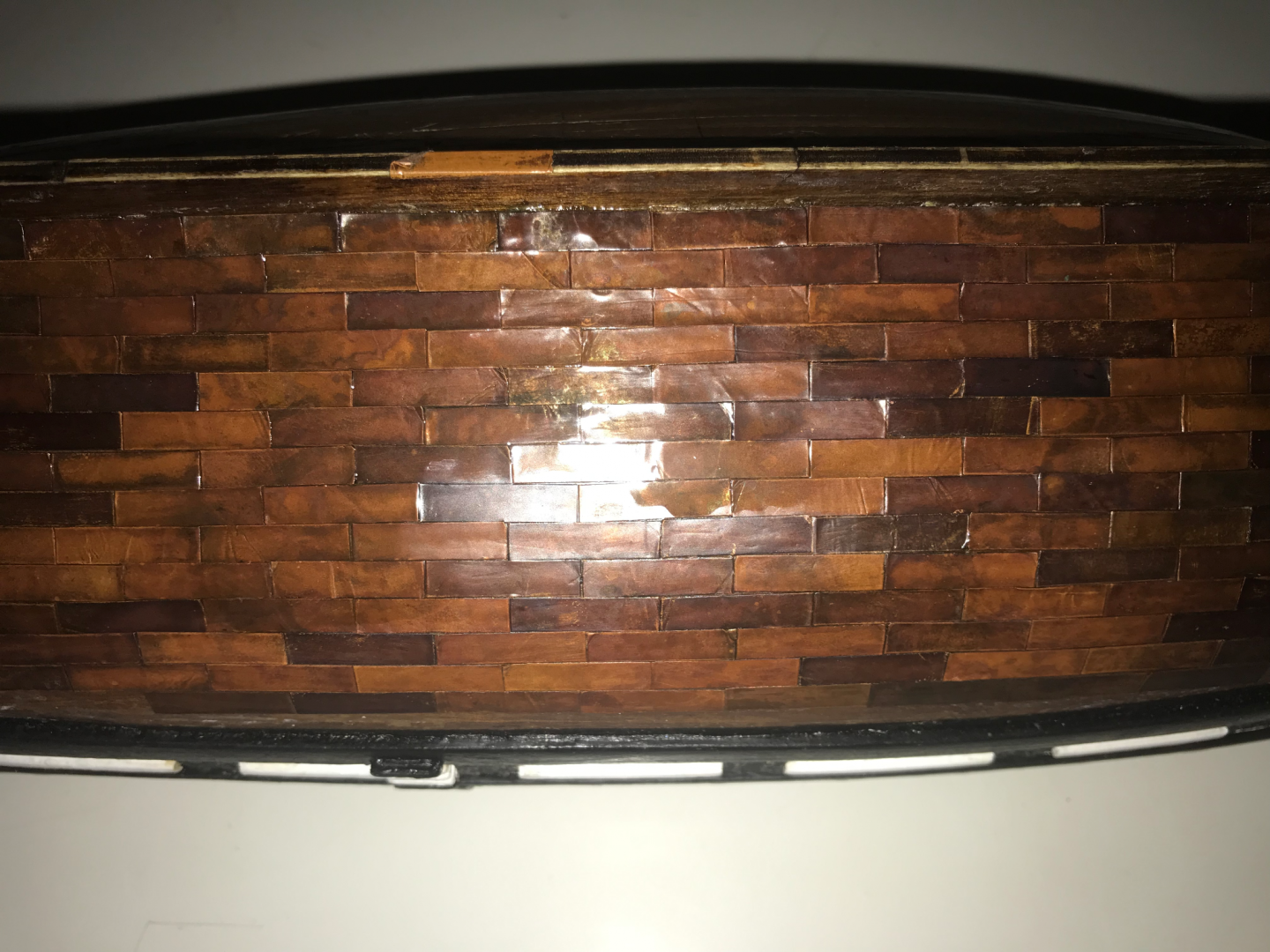
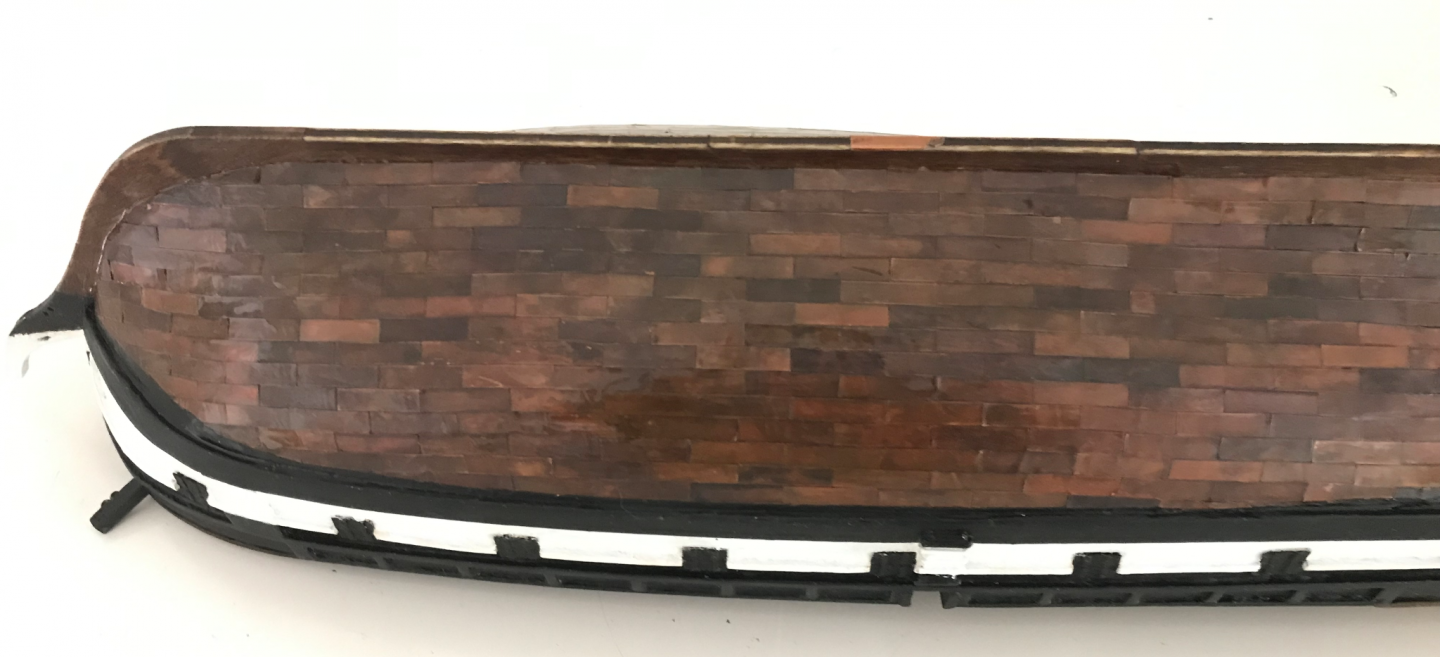
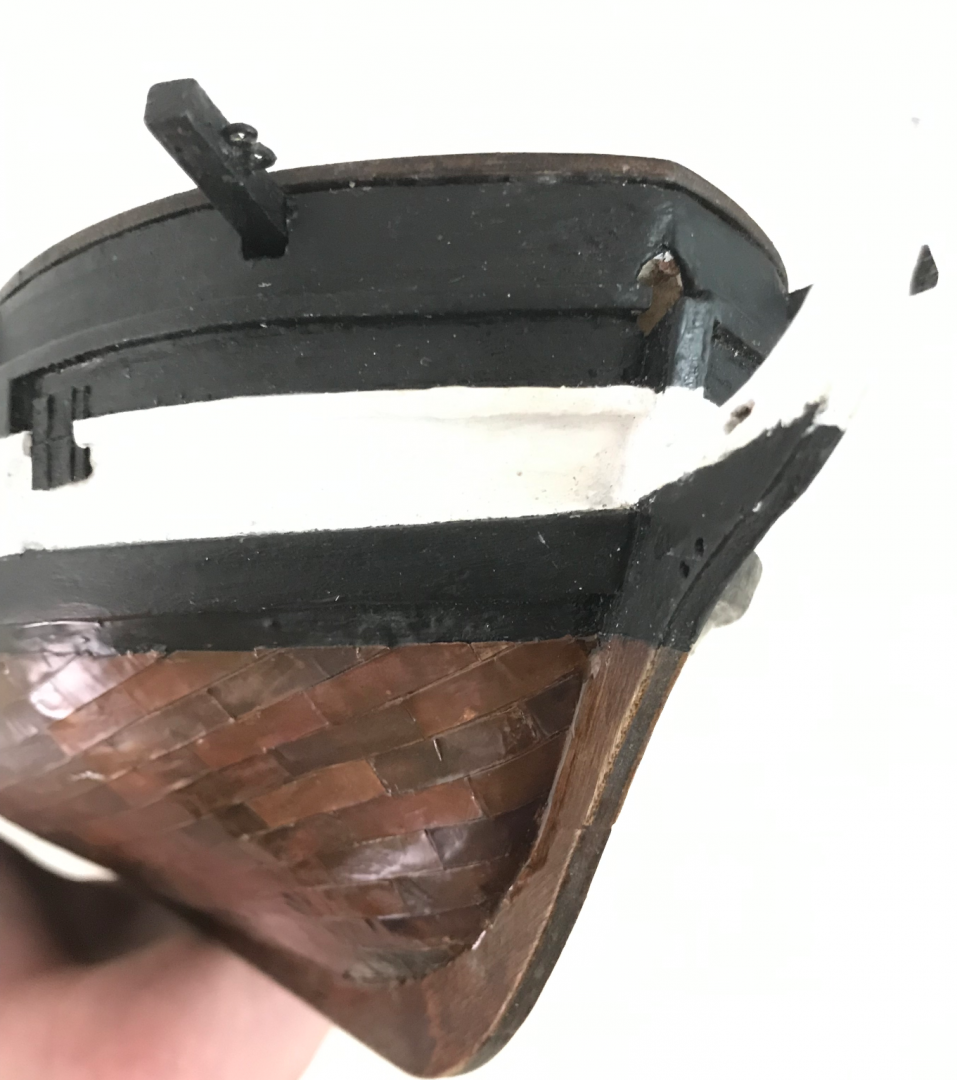
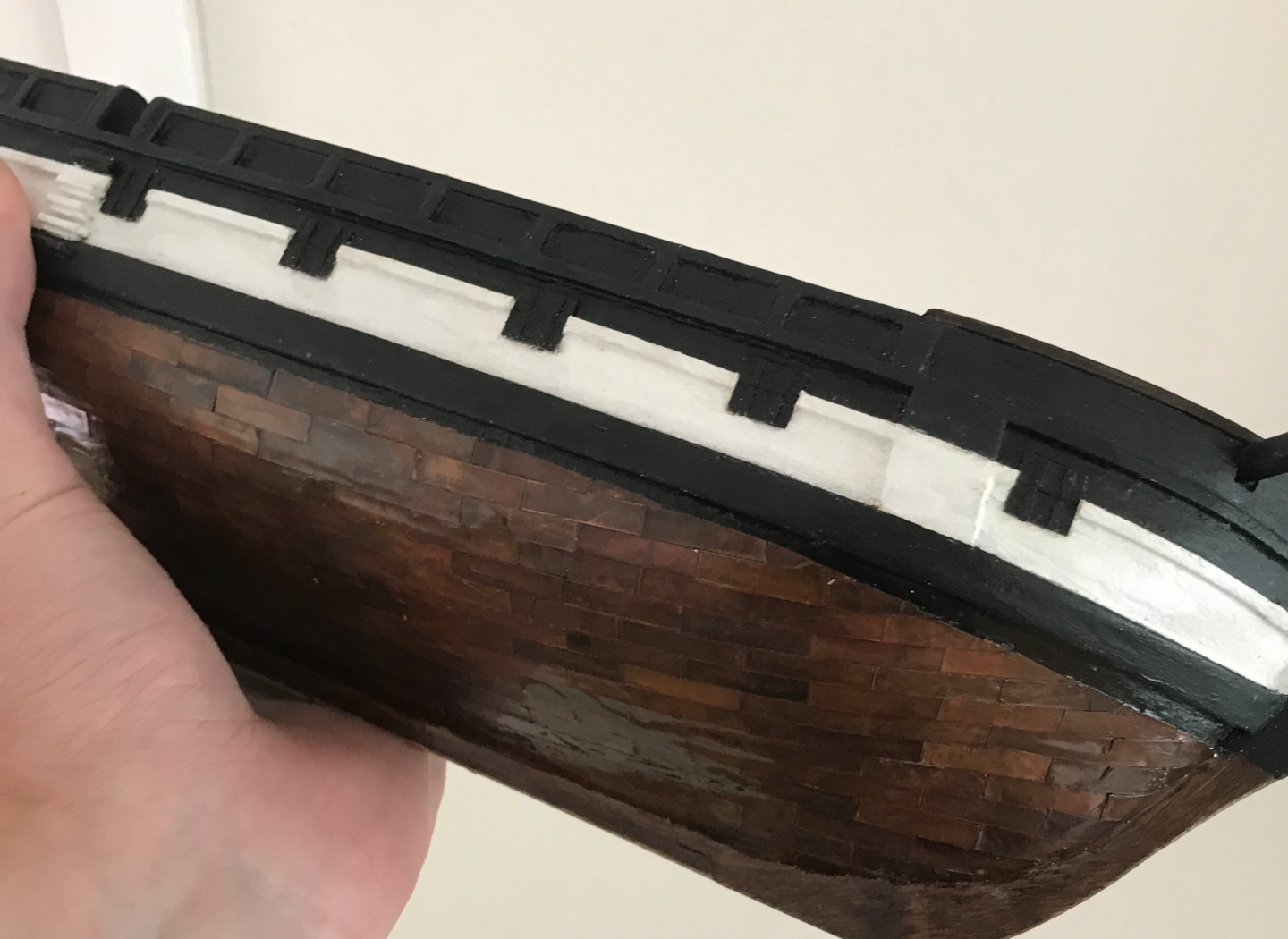
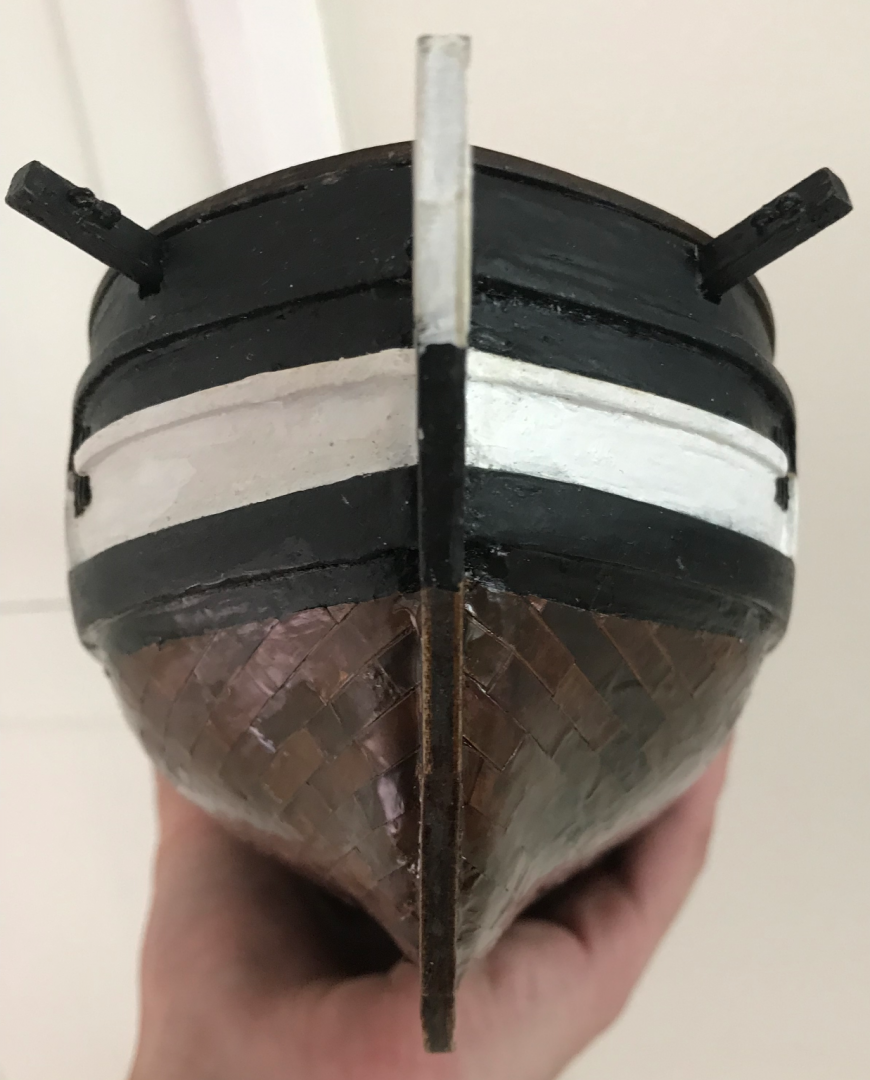
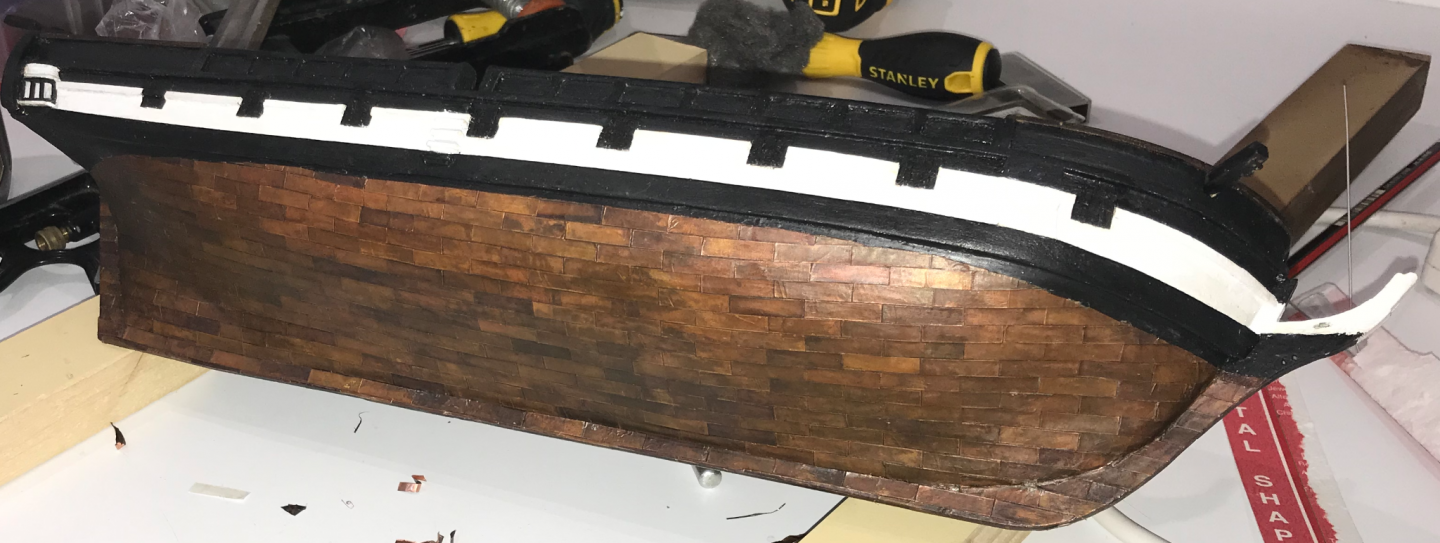
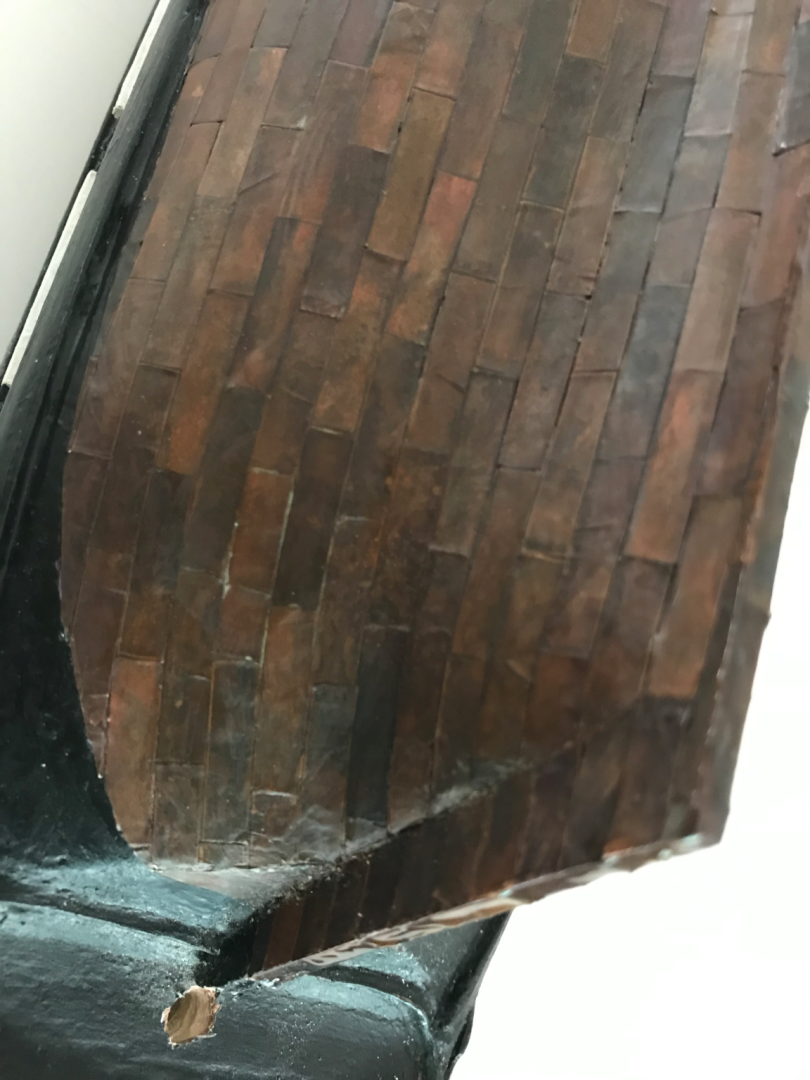
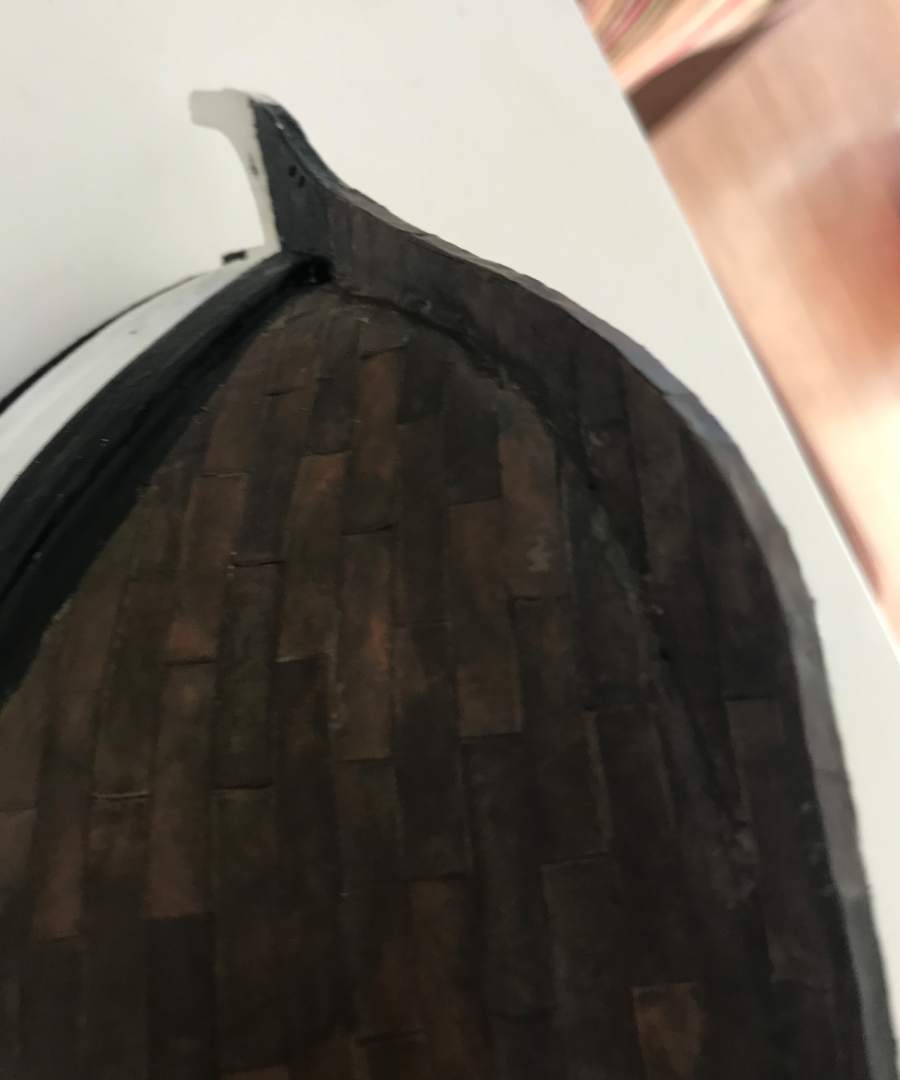
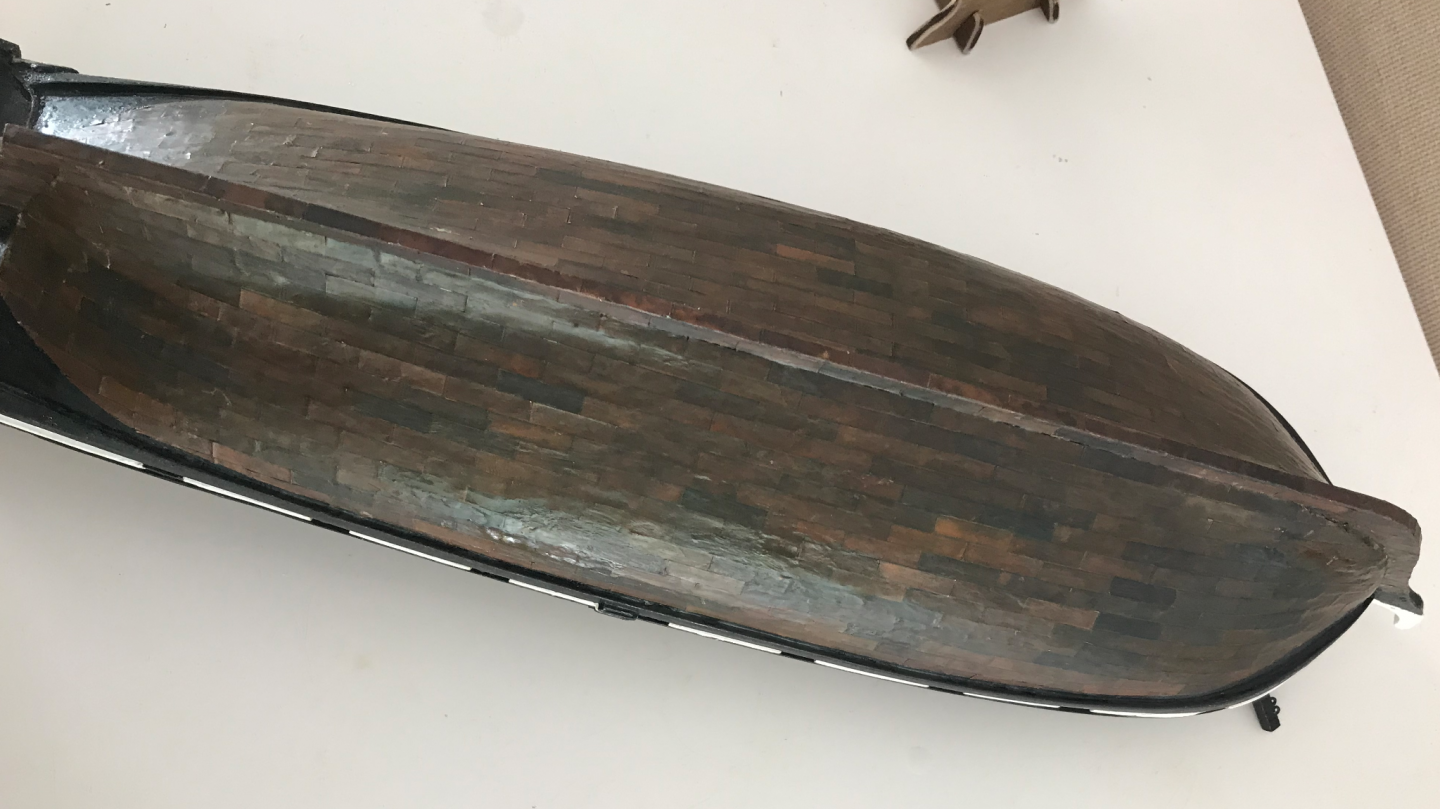

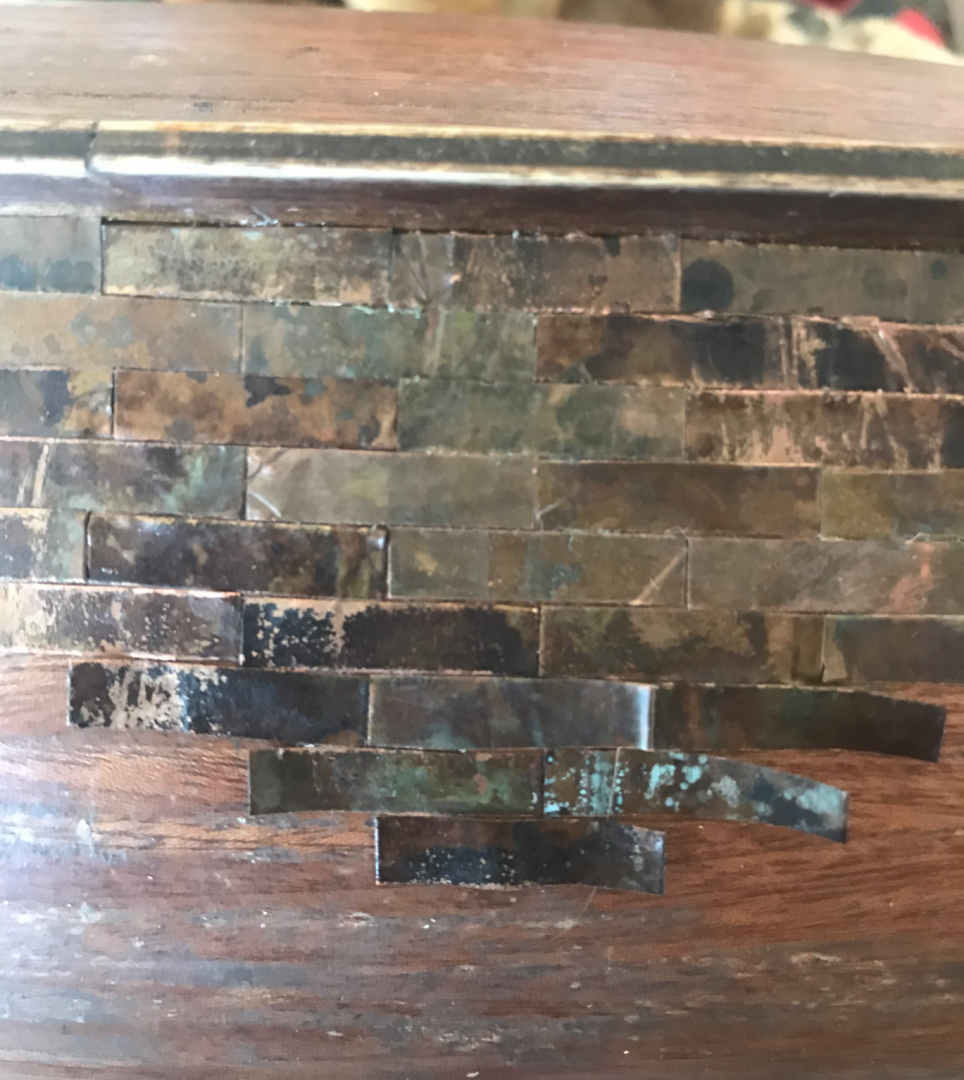
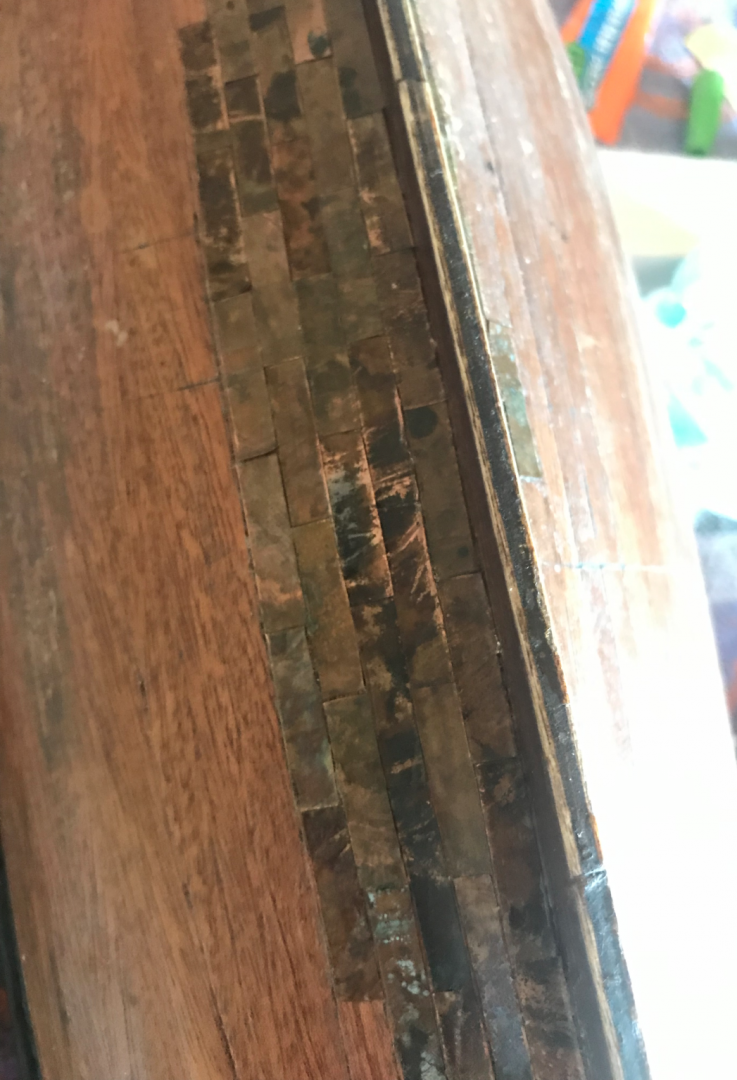
HMS Beagle by Techtonic - FINISHED - OcCre - 1:60
in - Kit build logs for subjects built from 1801 - 1850
Posted
They look great! The ship is very nice to look at now